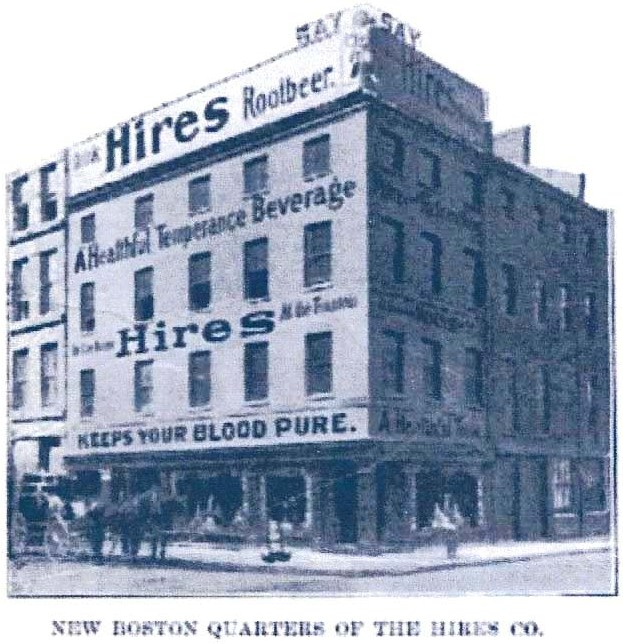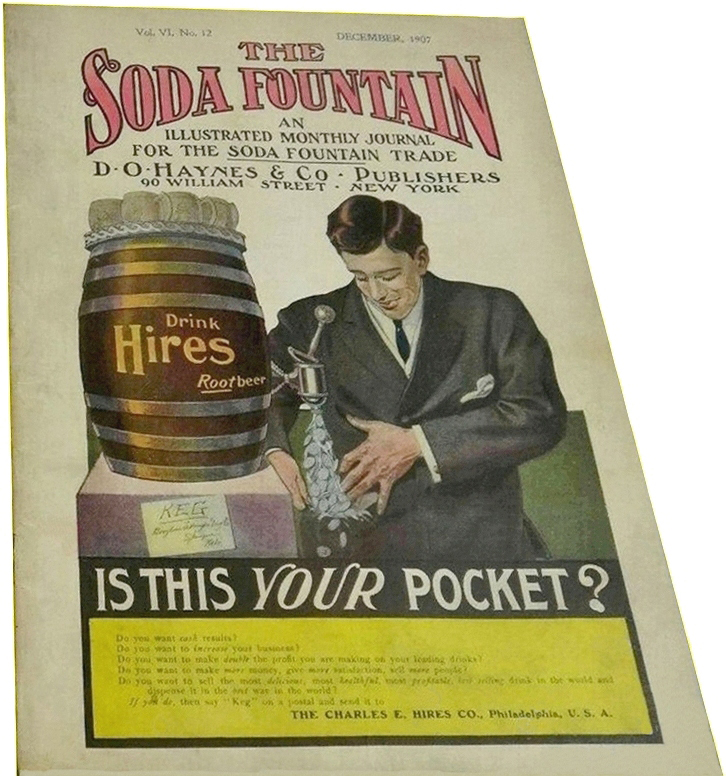1907
IT HAPPENED IN…1907
Oklahoma was admitted to the Union as the 46th
state.
Newly introduced products included outboard
motors, paper towels, Dixie cups, and Canada Dry Ginger Ale.
Clicquot Club Ginger Ale was advertised in 25
national magazines.
The American Bottle Co. marketed the first
bottles made by Owens’ automatic bottle machine.
This mailer to wholesalers introduced Hires' marketing plans for 1907, including their goal of doubling 1906's record sales volume. Note the mention of "trouble" with Hires Kegs and "complaints" about Hires Steins during 1906.
(Figure 1907-01, “Hires For
1907” flyer, front, 11.0” x 17.0”)
(Figure 1907-01, “Hires For
1907” flyer, back, 11.0” x 17.0”)
The following article appeared in an early 1907 issue
of The Soda Fountain trade
journal. The introductory
paragraph was authored by a staff writer, while the remainder was
clearly penned by someone in Hires’ sales department.
Today such an “article” would require that the word “ADVERTISEMENT” be
printed in the page header and footer.
Story of Hires’ Dispensing Keg.
Member of Firm Talks on the Subject.
The Charles E. Hires Co. sent a crew of salesmen to
the Pacific Coast to start the ball rolling for Hires in 1907.
They have just forwarded orders for five carloads of Hires’
Rootbeer Syrup for fountain use and a carload of the dispensing kegs.
This means almost three million steins of Hires.
The Soda Fountain
representative called at the office of the company on Broad street,
Philadelphia, for an interview.
We quote the words of a member of the firm.
“To say that we are surprised at the demand for our
kegs is expressing ourselves mildly.
It may be of interest to state a little of the history of this
apparatus. Shortly after we
began pushing Hires at the fountain, some two or three years ago, we
discovered that the greatest popularity of this beverage was in New
England, and that it was especially popular at such fountains as charged
the drink direct in the soda fountain and served it by a method the
dispensers had been following for many years.
That is, they would mix certain quantities of Hires’ Rootbeer
Syrup and water in the soda tank and charge it the same as the regular
soda water. They would then
connect the tank with the draught arm of the fountain.
The drink drew very foamy.
As a result, it was necessary for them to draw some off in a
pitcher and place it in the ice chest.
That they called still Rootbeer.
When serving a customer the glass was filled from one-half to
two-thirds from the pitcher and finished from the draught arm.
In this way they got about the right combination of liquid and
bead; but this method was slow and bothersome.
“After experiments we hit upon the keg idea.
The first apparatus did not supply the ‘still’ automatically.
We put out fifty kegs of this kind and saw that we had not
overcome the vital obstacle.
One day, while members of the company were debating the question,
a young man presented his compliments with the information that he
desired to sell us an automatic water cooler.
We told him our problem was an automatic dispensing apparatus and
that we wanted some way of dispensing Hires Rootbeer through the keg,
and an automatic method of supplying the ‘still’ part.
He ejaculated, ‘I can solve that question.’
We told him that he could there was a fortune in it for him.
The result was that in less than two weeks we had an apparatus
that did the business. We
immediately began the manufacture, giving a large contract to the man
who had solved our difficulty.
The consequence was that he equipped a factory which we have kept
running from that day until the present time on nothing but Hires’
Patent Dispensing Kegs. We
have just recently placed an order for 4,000 of these kegs.
“The demand was immediate and so large that we were
from 200 to 500 kegs behind on our orders during the summer of 1906.
Such a heavy demand, the establishment of a new factory and the
education of the workmen naturally caused mistakes.
We now have a keg which works perfectly.
All the dispenser has to do is to set it on his counter, charge
his tank, connect the two together, and ice up.
“The chief merits of our keg are that it is a great
ice saver, a great profit maker, as well as a great business maker.
It supplies both the ‘still’ and the ‘foam’ with one pressure of
the faucet. Everything
about the keg is the best that can be obtained and, consequently, the
most expensive. We are
making it possible for the dispenser to increase his profits on every
gallon of syrup $2.60.
“We are making great preparations to help the
dispenser. We give him a
free distribution of tickets, which we send without expense to him to a
list of names which he furnishes.
We also give him a handsome automatic keg such as is shown in the
cut printed with this article (see the upper right hand corner of Figure
1907-02). This display is
40 inches high, 25 inches wide and beautifully lithographed in twelve
colors. It is an automatic
clock arrangement which raises and lowers the boy, making it appear that
he comes out of the keg.
The clock will run three to four hours each winding.
The display can be set in a window, on a counter or elsewhere.”
Industry supply catalogs offered Hires products to storekeepers.
This first example lists Hires’ Innovation syrup jars at $10.00,
Hires kegs for $75.00, and Hires steins at $2.00 per dozen.
(Figure 1907-02, industry
supply catalog page)
The
special offers listed on this soda water supplies catalog page featured
package deals for both leased and loaned items, such as the rare
Villeroy & Boch dispensing bowl and 19” tall syrup jars.
(Figure
1907-03, industry supply catalog page)
A larger version of "The Hires Automatic Display" image included in the industry supply catalog pictured as Figure 1907-02 also illustrated a brief announcement published in the February, 1907 issue of The Apothecary and New England Druggist, "A Business-Pharmaceutical Journal Owned and Published by Retail Druggists." Wording on the left arm and front of the Hires Boy's bathrobe reads "YOU CAN'T GUESS HOW GOOD IT IS!" and "Hires out of the keg" is printed below the top band of the keg. Here's the image and the accompanying text:
An Automatic Window Display That Will Draw Attention.
The Charles E. Hires Company, Philadelphia, creators of the Dispensing Keg which is having such a wonderful success, desire us to announce that they will present to each customer who orders one of their Kegs, a handsome automatic display, cut of which is shown at the head of this article. It is 40 inches high, 25 inches wide at the base and beautifully lithographed in twelve colors. The automatic clock movement raises and lowers the boy, making it appear that he is coming out and re-entering the Keg. They have hit on the happy phrase 'Hires out of the Keg.' The automatic arrangement is made to run three or four hours with each winding.
The especially interesting feature of this display is that it can be set in your window, on your counter, on the Keg or any place and on account of the automatic movement and the originality of the design, it will never fail to attract attention and should be a wonderful assistance in stimulating a demand for this wonderful beverage.
It will probably interest our readers to know that Hires Rootbeer has had a wonderful increase in sales at the soda fountain. It is not hard to find the reason, because the beverage is famous for its purity and its tonic properties and as the use of the Keg vastly increases the profit to the Dispenser, naturally this is an aid to its popularity, because where both a customer and dealers are satisfied and even enthusiastic, there is bound to be a large response.
(Figure 1907-03.5, The Apothecary and New England Druggist, February 1907)
Hires dispensing bowls were leased, not sold.
This example is missing the syrup jar and spigot.
(Figure 1907-04, dispensing bowl)
This Hires syrup jar is pictured with a serving bowl,
platter, and a (1915) Hires Boy mug.
The top of the bowl reads “Appetizing Delicious Refreshing
Healthful Sparkling.”
(Figure 1907-05, syrup bowl, platter, and [1915] Hires Boy mug)
The cover of the February, 1907 issue of The Soda Fountain journal featured a dapper young man enjoying a frothy stein of Hires Root Beer dispensed from a Hires Keg. Readers were encouraged to "Say 'Keg' on a postal and send it to The Charles E. Hires Company, Philadelphia, U.S.A., Originators of both the Rootbeer and the Keg."
(Figure 1907-05.5, The Soda Fountain, February, 1907, front cover)
This full page Hires Keg advertisement mentions “all
syrups must Comply with the Pure Food Law and that makes your other 5¢
drinks cost you more, which reduces your profit.
Again, it is worth countless dollars to you to be able to count
on A Definite Profit no matter who runs the fountain – whether you or
your clerk.”
(Figure
1907-06,
National Druggist, April 1907, courtesy of Dennis
Smith)
A serving tray loaded with Hires Boy steins sits atop
the keg pictured in this advertisement.
(Figure
1907-07, The
Pharmaceutical Era, April 4, 1907)
This wood-framed, tin sign was distributed in Canada. It measures 18.5" x 67.25".
(Figure
1907-07.5, wood-framed, tin sign, front)
(Figure
1907-07.5, wood-framed, tin sign, back)
This memo was sent from Hires’ Norfolk, Virginia
office. In addition to
Philadelphia, locations are listed in New York City, Boston, Chicago,
San Francisco, Baltimore, and Montreal, Canada.
The header specifies Hires was “Established 1870,” an
exaggeration of the firm’s founding date.
(Figure 1907-08, Hires
letterhead, April 9, 1907, 8.0” x 7.25”)
This edition of Hires company letterhead was designated “Form 79” and
printed March 25, 1907. It also
indicates the company was “Established 1870.”
(Figure
1907-09, Form 79 letterhead, 8.0” x 10.5”)
This full-color cover of
The Soda Fountain featured a
storekeeper testimonial dated April 12, 1907.
The flag flying over the building in the background reads “U.S.
MINT.”
(Figure
1907-10, The
Soda Fountain, April 12, 1907, front cover)
This pool hall provided cigars, spittoons, slot
machines, soft drinks from an assortment of syrup bottles, and Hires
Root Beer from a keg. Note
the Hires Boy sign on top of the keg.
(Figure 1907-11, pool hall
photograph)
This circa 1907 photo depicts a Hires refreshment stand at Philadelphia's well known Woodside Amusement Park. The signage suggested fairgoers "Refresh Yourself" and "Drink Hires Rootbeer." Note the two 50 gallon Hires Patent Dispensing Kegs and the Hires Boy sign mounted at the peak of the roof. This image was taken and published as a real photo postcard by J. McLauchlan at his Woodside Park Studio.
(Figure 1907-11.5, real photo
postcard)
(Figure 1907-12, paper napkin,
14.0” square)
The
Beach Art Display Company of Coshocton, Ohio produced this tin serving
tray picturing the Hires Boy wearing a blue robe and holding a Cauldon
Ware porcelain Hires mug.
Henry D. Beach owned one of the numerous Coshocton firms producing art
plates and other types of specialty items that combined art and
advertising.
(Figure 1907-13, tin tray,
copyrighted May 21, 1907 by Hires, 24.0” x 20.0”)
This tin tray also pictures the Hires Boy wearing a
blue robe and holding a Cauldon Ware mug.
(Figure 1907-14, tin tray with
black background and red trim, 13.0” diameter)
The illustrated Hires Boy image was used for a pocket mirror which may be original or may be fake. Hires used this format and image of the Hires boy holding a Villeroy & Boch stein for celluloid pinback buttons.
(Figure 1907-15, pocket mirror)
This tray pictures the Hires Boy wearing a blue robe and holding a
Villeroy & Boch Hires Boy stein.
(Figure 1907-16, tin tray with a dark blue background and yellow trim, 13.0” diameter)
The Swayze Advertising Company in Canton, Pennsylvania made this very colorful, round, cardboard sign for Hires. Note the Hires Boy is holding an unmarked stein. Swayze was a small, short-lived firm that produced waterproof outdoor advertising signs coated with parafin. They also produced other signs for Hires.
(Figure 1907-17, cardboard sign)
This round, paper label confirms Hires was “GUARANTEED UNDER THE FOOD AND DRUGS ACT. JUNE 30, 1906. SERIAL No. 127” and “Made From Roots, Barks, Leaves and Flowers.”
(Figure 1907-18, paper label, Hires Family Archives)
(Figure 1907-19, glass, paper-backed hanger,
6.0” diameter)
(Figure 1907-20, tin hanger, 5.5” diameter)
This 7.0" diameter decal was produced for Hires by the Translucent Window Sign Company in New York City. They advertised their "Decalcomania Transfers (were) the Last Word - the finishing touch of the successful manufacturer to his product...that distinguishes your product from the inferior kind. Translucent W.S. transfers are guaranteed -- easily applied -- made in Germany -- spoilage less than domestic manufacture. Particularly adaptable to high class-users of stenciled trademarks...They are artistic -- nonfadable -- average life two or more years -- guaranteed -- do not shut out the light -- cannot be washed off -- and are welcomed by the retailer." The pictured example was never used and is still attached to the original backing paper.
(Figure 1907-20.5, decal transfer, 7.0” diameter)
The distribution of free drink coupons generated significant growth for the Coca-Cola Company and Hires quickly followed suit. This example of Hires' first coupon was accompanied by a typewritten cover letter bearing a "CEHCo" logo and this message:
Esteemed Friend: -
We shall count it a favor if you will use the enclosed ticket by which we present an opportunity for you to know the genuine HIRES Rootbeer - a beverage of delightful flavor - a tonic to nerve, brain and blood. Drink it freely and you will eat, work, sleep and feel better. It relieves thirst and fatigue and in every way contributes to your physical, mental and moral development.
In this day of chemical concoctions and harmful adulterations it is worth while to know one beverage that is absolutely dependable for all ages and all classes of people.
It is to your interest that we warn you against imitations, for we know the harmful things they are made of and you don't. There is just one genuine Rootbeer - HIRES - literally made of the vitality of Nature - the fresh air and sunshine that grows into roots, barks and berries for the good of mankind.
HIRES Rootbeer has won national fame - and held it for twenty-eight years - as a home and fountain drink because of its many and peculiarly individual virtues. No other drink so fully and happily combines health purity and refreshment in one delicious draught. Won't you use the ticket?
Yours sincerely,
Charles E. Hires. (signature)
(Figure 1907-21, paper coupon,
front, 2.875” x 1.75”)
(Figure 1907-21, paper coupon,
back, 2.875” x 1.75”)
This marketing campaign was soon expanded into a series of
12 coupons depicting the gathering of Hires Root Beer’s ingredients.
(Figure 1907-22, Hops paper
coupon, front)
(Figure 1907-22, Hops paper
coupon, back in black-and-white)
(Figure 1907-23, Triticum
paper coupon, front)
(Figure 1907-23, Triticum
paper coupon, back in color)
(Figure 1907-24, Sassafras
paper coupon, front, full color back)
This Sarsaparilla coupon was produced with both full color and black-and-white backs.
(Figure 1907-25, Sarsaparilla
paper coupon, front, full color back)
(Figure 1907-26, Pipsissewa
paper coupon, front, black-and-white back)
(Figure 1907-27, Wintergreen
paper coupon, front, black-and-white back)
(Figure 1907-28, Birch Bark
paper coupon, front, black-and-white back)
(Figure 1907-28.5, Juniper
Berries
paper coupon, front, black-and-white back)
(Figure 1907-29, Ginger Root
paper coupon, front, black-and-white back)
(Figure 1907-29.5, Spikenard
paper coupon, front, full color back)
This pocket mirror features a beautiful young woman holding a Hires Boy stein. The color of the woman’s rosy cheeks matches the roses she is holding and wearing in her hair.
(Figure 1907-30, pocket mirror)
The Bastian Brothers of Rochester, New York produced this pocket mirror for Hires. Although it may appear to be a duplicate of the previously example, close examination reveals numerous differences between the two images. Note the young woman is holding roses in her right hand rather than a Hires Boy stein.
(Figure 1907-31, pocket mirror)
(Figure 1907-32, “Put Roses In
Your Cheeks” trade card, color, front, 3.0” x 5.0”)
(Figure 1907-32, “Put Roses In
Your Cheeks” trade card, color, back, 3.0” x 5.0”)
(Figure 1907-33, “Put Roses In
Your Cheeks” trade card, black-and-white, front, 3.0” x 5.5”)
(Figure 1907-33, “Put Roses In
Your Cheeks” trade card, black-and-white, back, 3.0” x 5.5”)
This wooden, dove-tailed shipping case held one dozen bottles of Hires' Household Extract. The wooden lid is missing from the illustrated example.
(Figure 1907-33.5, Household
Extract shipping case, 7.0" x 6.0" x 6.0")
Each three ounce bottle of Hires Household Extract was packaged in a cardboard carton.
(Figure 1907-33.8, Household
Extract carton, front panel)
Note the detailed listing of contents in compliance with the June 30, 1906 Food and Drugs Act and "Copyright 1907."
(Figure 1907-33.8, Household
Extract carton, side panel)
The "PENALTY WARNING" was designed to prevent users from using the extract to produce fountain drinks. The "fine print" on the remaining side states "The Drink made from it is the most pleasant and invigorating HEALTHFUL TEMPERANCE BEVERAGE that can be found for the warm weather, producing a gentle stimulation throughout the body. It is peculiarly refreshing and thirst-quenching - sparkling, effervescent and wholesome. The low price at which it is offered, and the readiness with which the Drink is prepared from it, render this PREPARATION THE MOST POPULAR ARTICLE IN THE MARKET. It is made directly from fresh barks and roots."
(Figure 1907-33.8, Household
Extract carton, bottom and side panels)
(Figure 1907-33.8, Household
Extract carton, end panel)
This three-dimensional, die-cut, cardboard hanger is 23.0" in diameter.
(Figure 1907-34, “Puts Roses
in your Cheeks” 3-D, die-cut, cardboard hanger)
The Dutch boy and girl image also appeared on this 3.0" x 7.0" paper packet of Fleischmann's Yeast used for making root beer with Hires' Household Extract.
(Figure 1907-34.5,
Fleischmann's Yeast packet, front)
(Figure 1907-34.5, Fleischmann's Yeast packet, back)
This pottery mug is 4.25" high with a 3.5" base diameter.
(Figure 1907-35, pottery mug,
Dutch girl holding a flower pot, front)
(Figure 1907-35, pottery mug,
Dutch girl holding a flower pot, back)
The sides of these two tin Hires Fountain Syrup containers are embossed "Hires Syrup." Both are 10.0" tall and contained one gallon of syrup. The spout on this first example was centered.
The second example has a corner spout and a different
style handle with a metal license tag attached reading:
The purchaser of this syrup is licensed to use the
trade mark and the name “Hires” in dispensing the beverage made from
this syrup when dispensed in accordance with directions, not otherwise.
DIRECTIONS: Dispensed from Fountain.
Use one part of Hires Syrup to seven parts of carbonated water
and blend well. Dispensed
through the Munimaker, follow directions accompanying the apparatus.
N.B. It is a condition of the purchase that this syrup shall not
be used for bottling purposes.
The Charles E. Hires Company.
(Figure 1907-36, one gallon
Hires Fountain Syrup containers)
This real photo postcard image depicts a hot air
balloon displaying two Hires Root Beer banners at the Newmarket, New
Hampshire fair on September 19, 1907.
(Figure 1907-37, real photo
postcard, September 19, 1907)
The
October, 1907 issue of The Soda
Fountain magazine carried this news item:
The phenomenal growth in the sale of Hires’ root beer is strikingly illustrated by the increase in size and importance of its branch offices. Until the last few years the company merely rented desks, or at the most single rooms, for conducting the business at its branches, but it is now compelled to lease entire buildings for the same purpose. The company does all of its manufacturing at the home office in Philadelphia, but the growth of business has brought about a decided change in the importance of the branch offices. Boston has always been one of the most active centers for Hires’ root beer in the country. The accompanying illustration shows the new quarters of the company at 31 India street. The entire building of five floors is used for handling the New England trade alone. John M. Bair, the manager of this branch, has been with the company so many years that if you should ask him how long, he would probably tell you he was born there. This company has some twenty branch offices throughout the country, to practically all of which Hires’ root beer is shipped in carload lots.
The other illustration shows a mammoth keg on wheels, which the company has had in the Boston trade for the last year. It is so large and heavy that it requires two horses to pull it. A man stands beside the keg with one of the regular dispensing kegs and two soda tanks with other necessary paraphernalia. There is a large double door in the rear, and from this the drink is dispensed to the people on the street, at fairs and outdoor sociables, etc. The hoops of the keg are heavy brass and the entire wagon is of the finest oak. The keg is now visiting every county fair in New England, and it is easy to imagine it is not failing to attract attention and do the business.
There was nothing subtle about the message sent to shopkeepers by the cover of the December, 1907 issue of The Soda Fountain journal - sell Hires Root Beer and the money will flow into your pocket!
(Figure 1907-38, The Soda
Fountain, December, 1907, front cover)

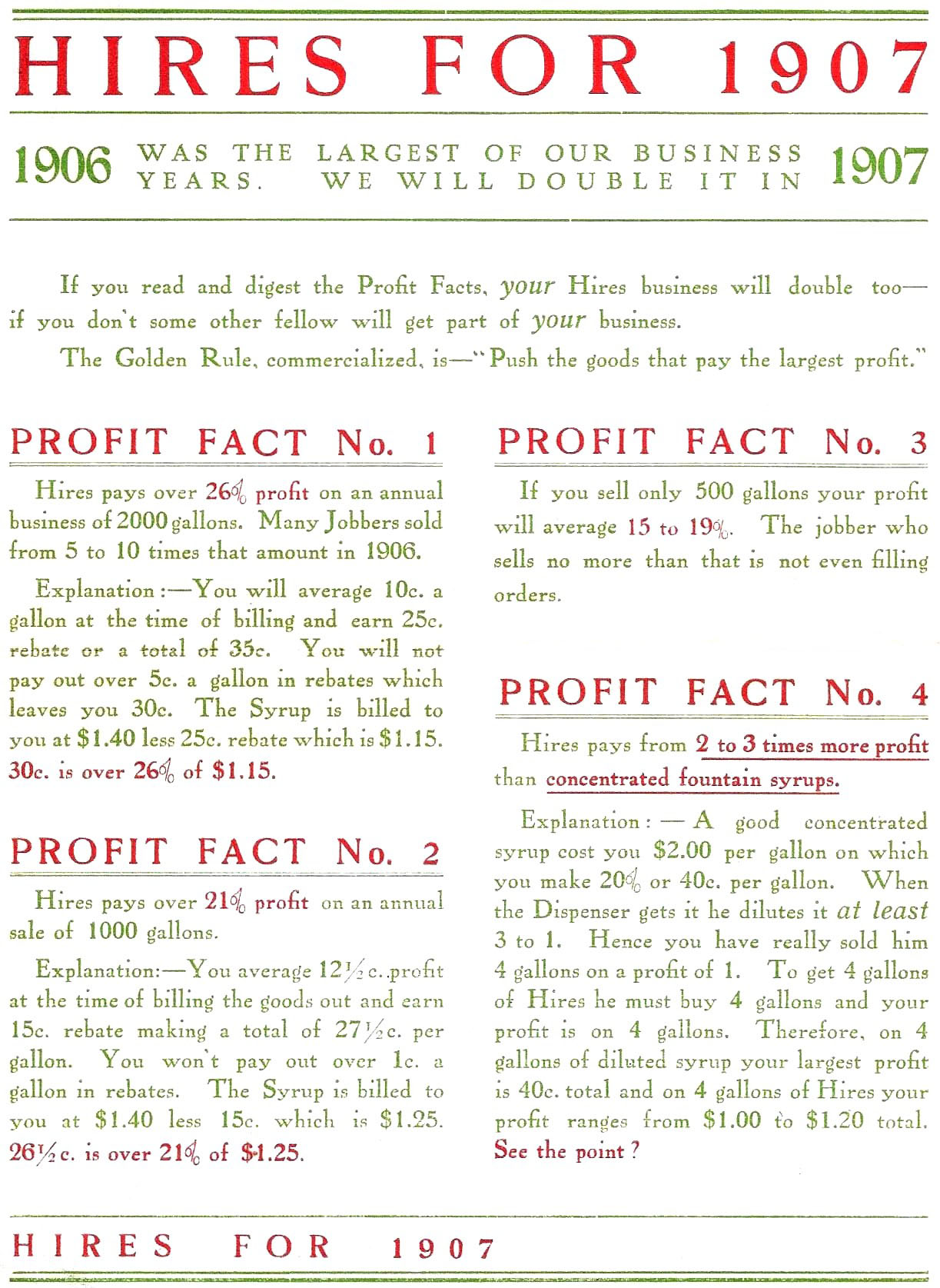
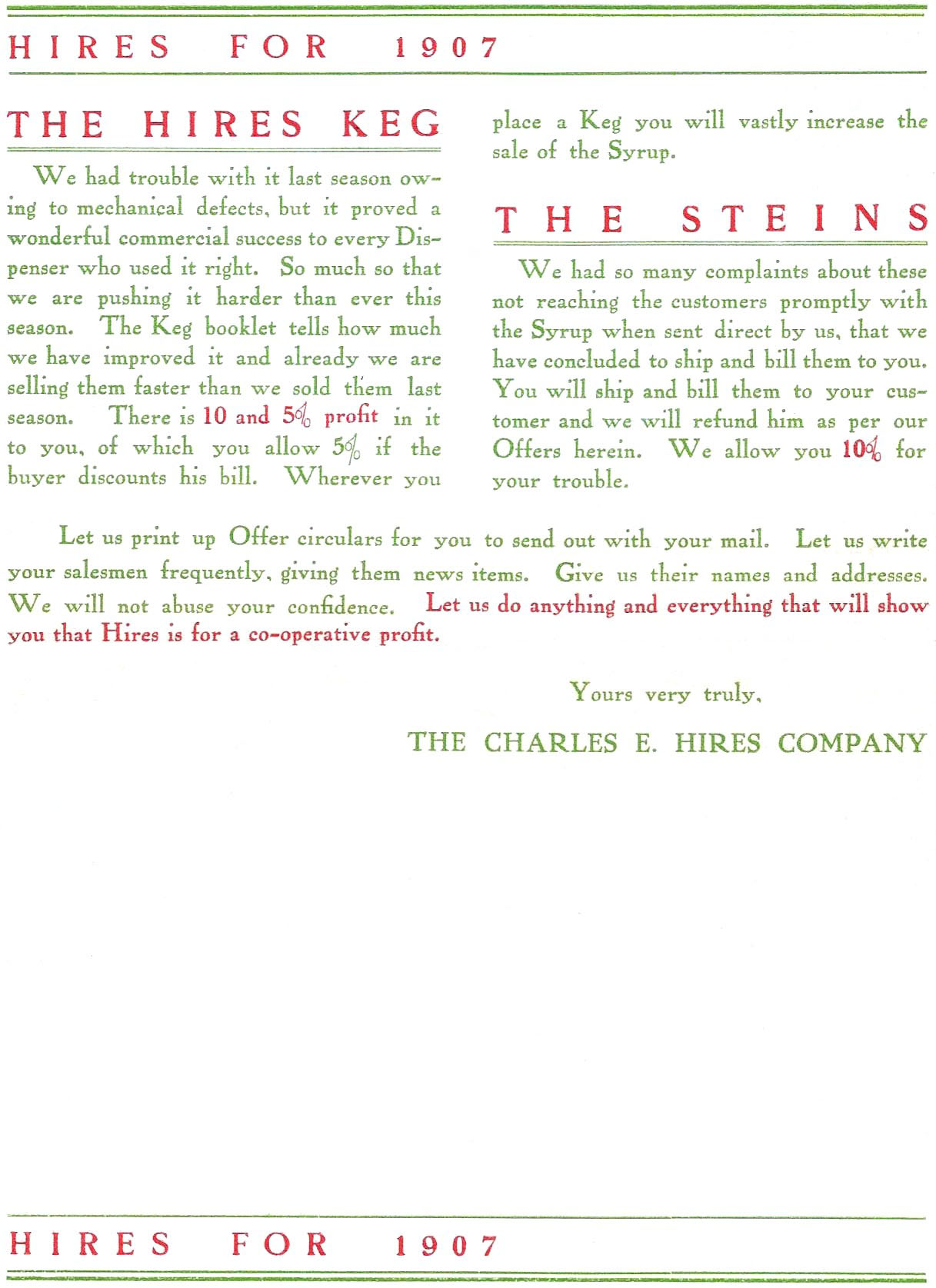
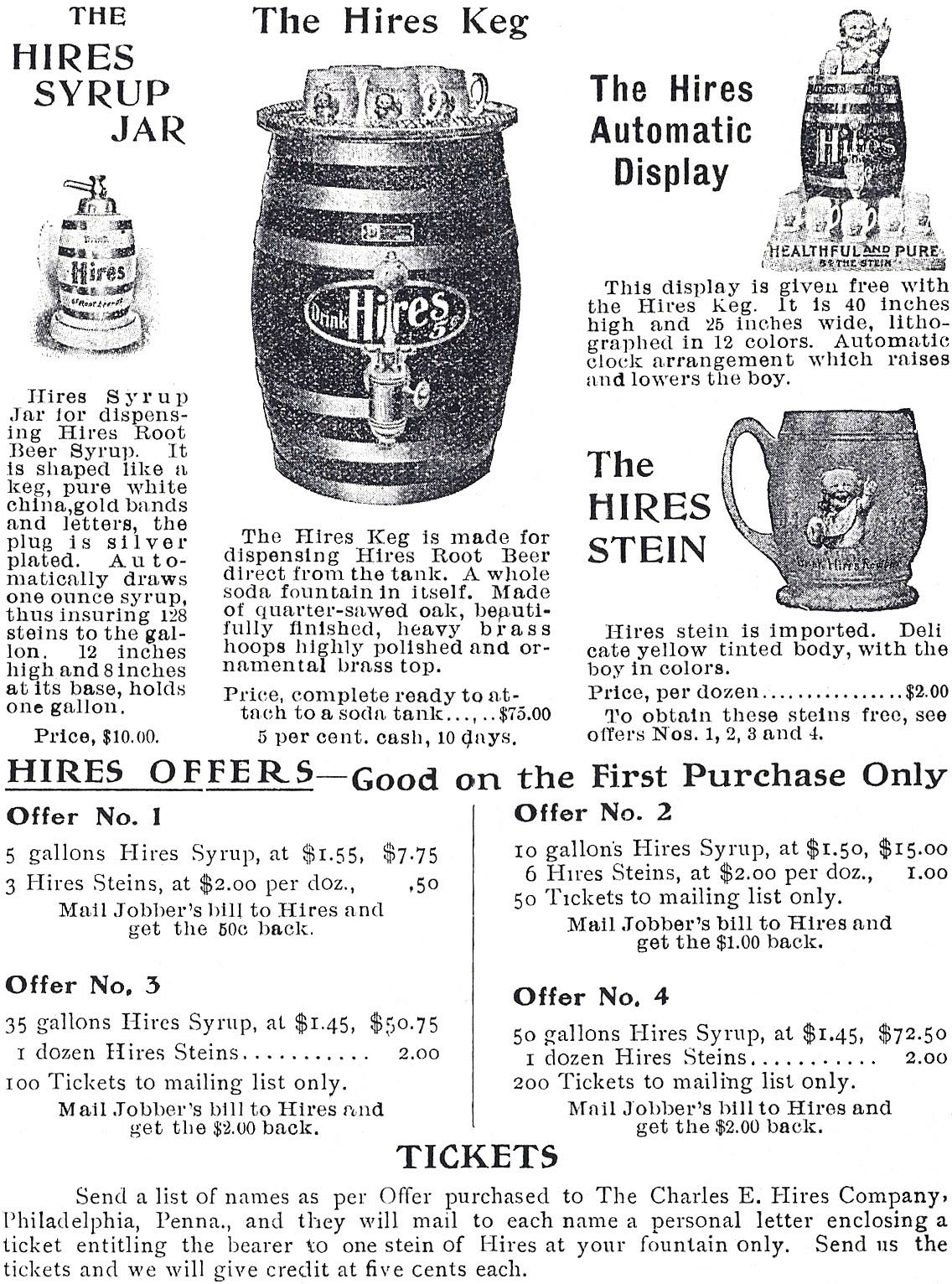

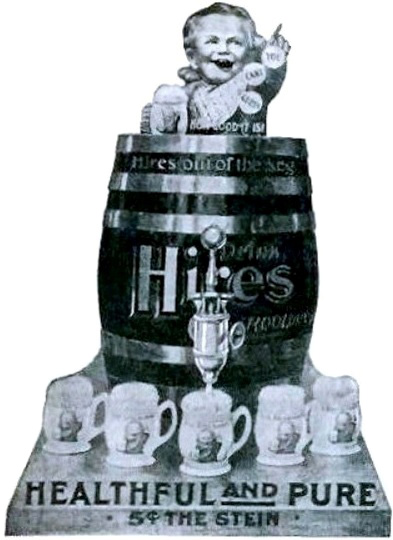
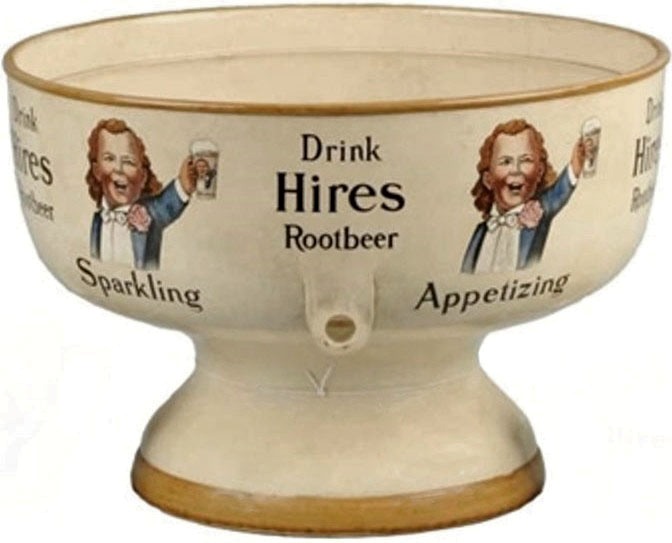

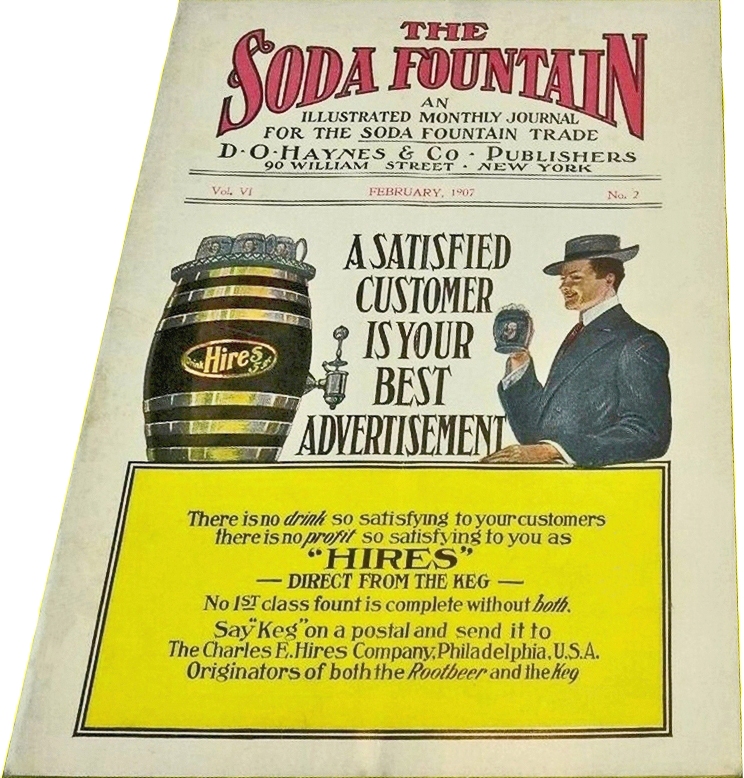
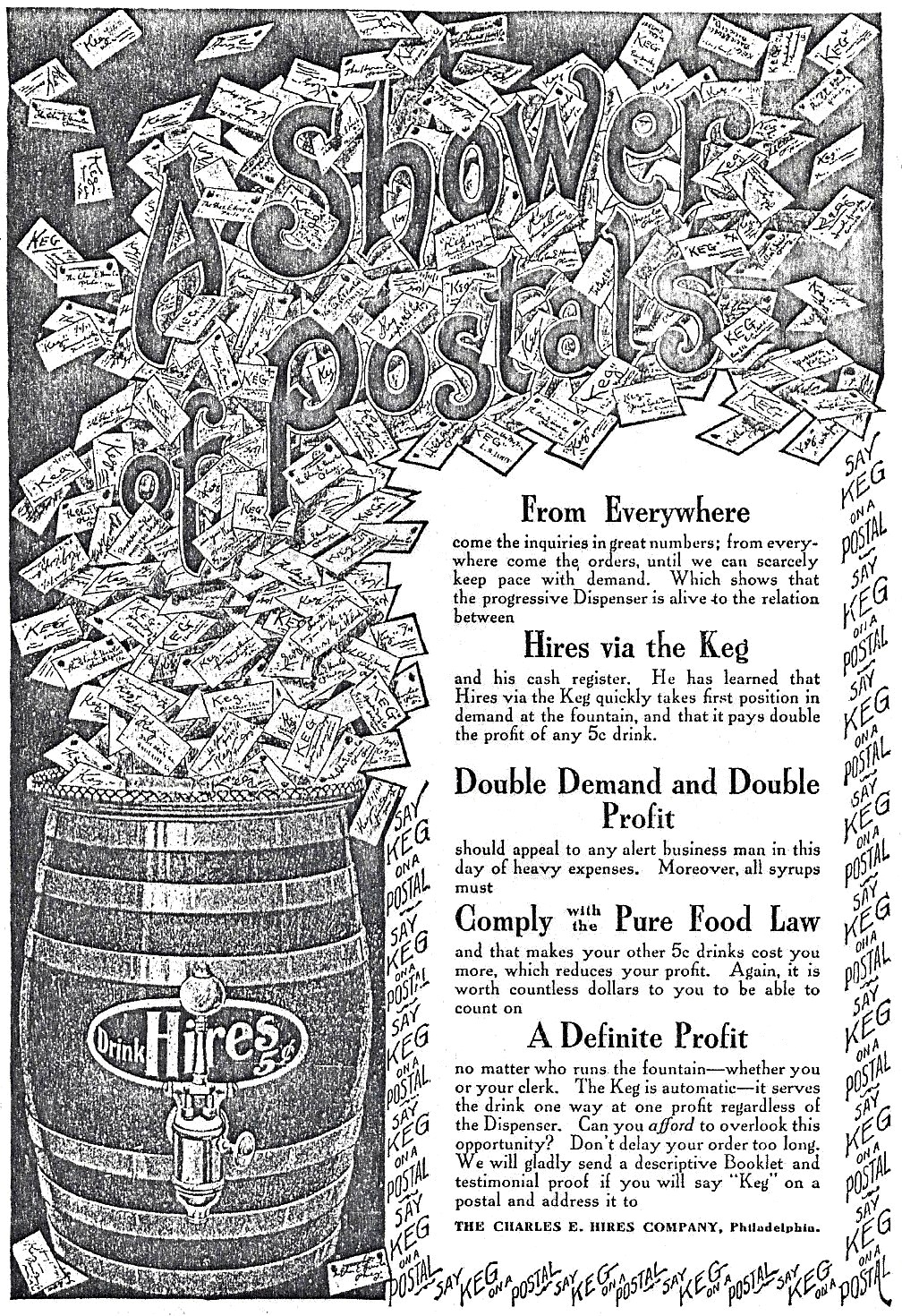
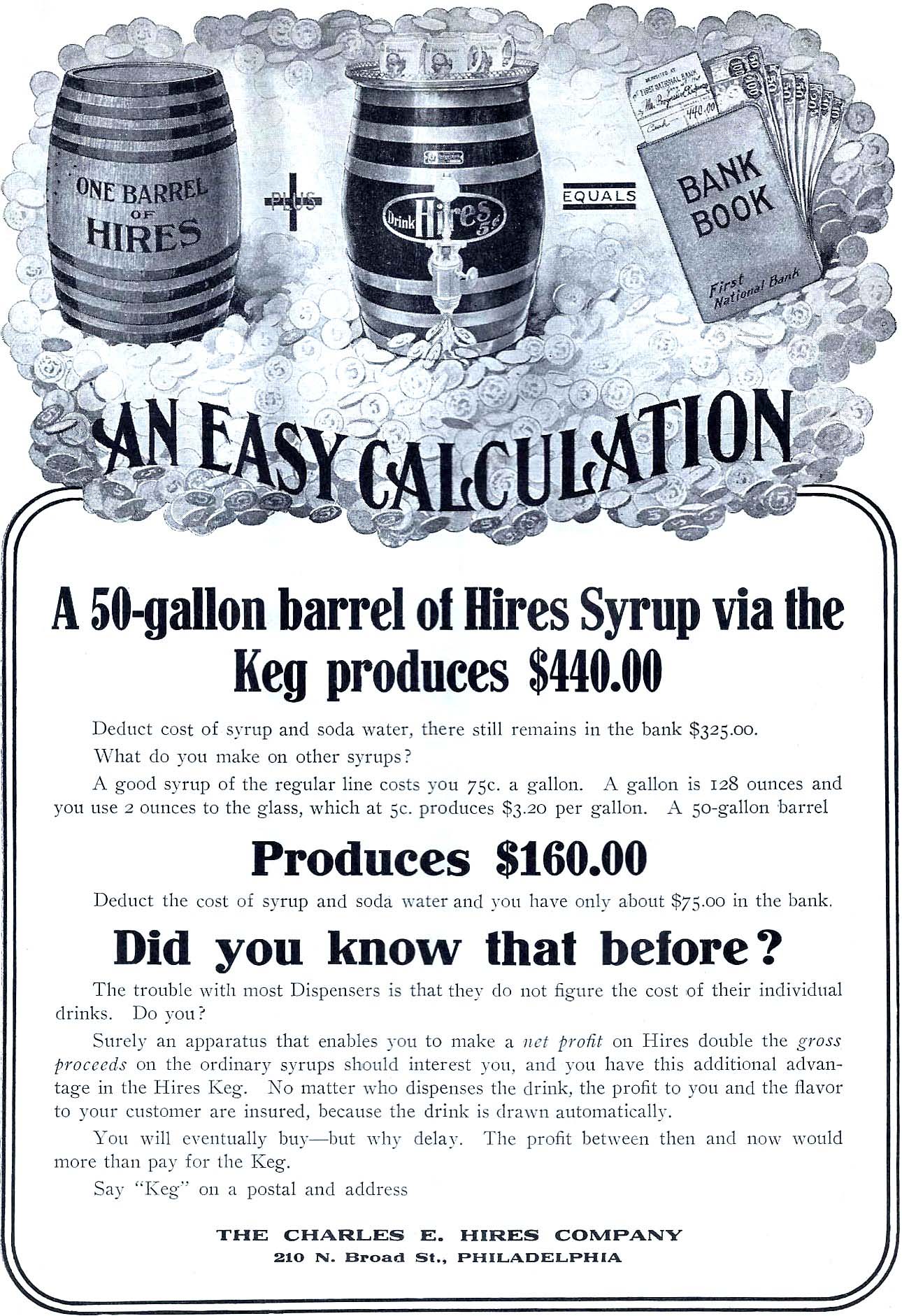



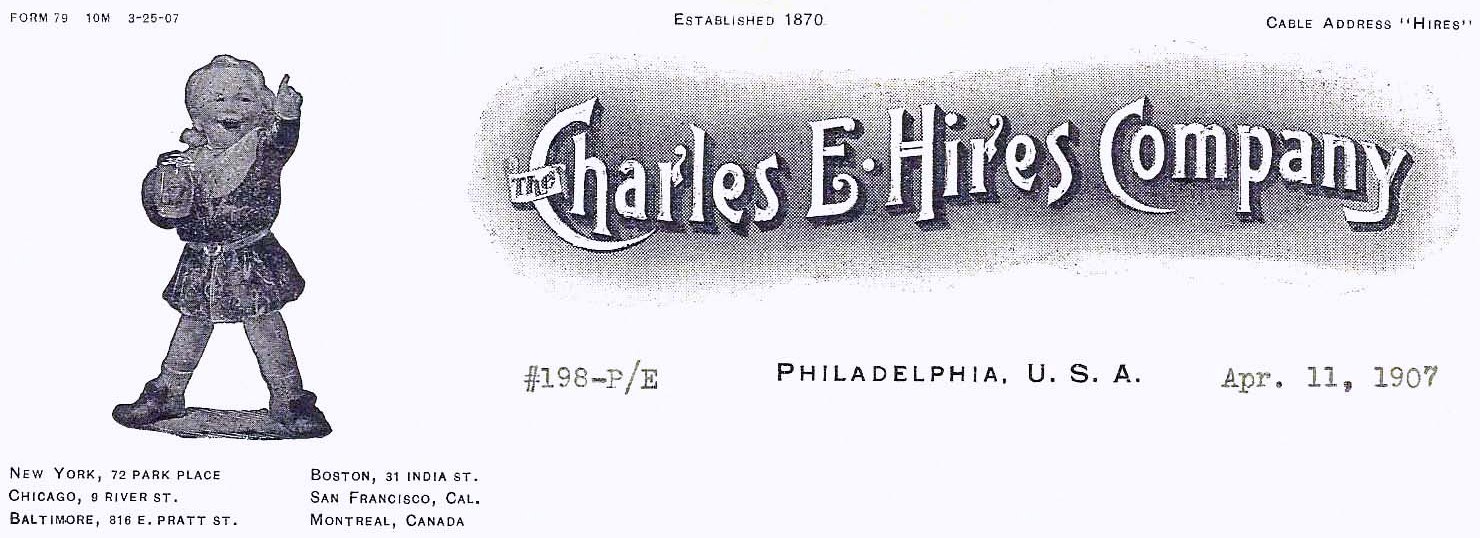
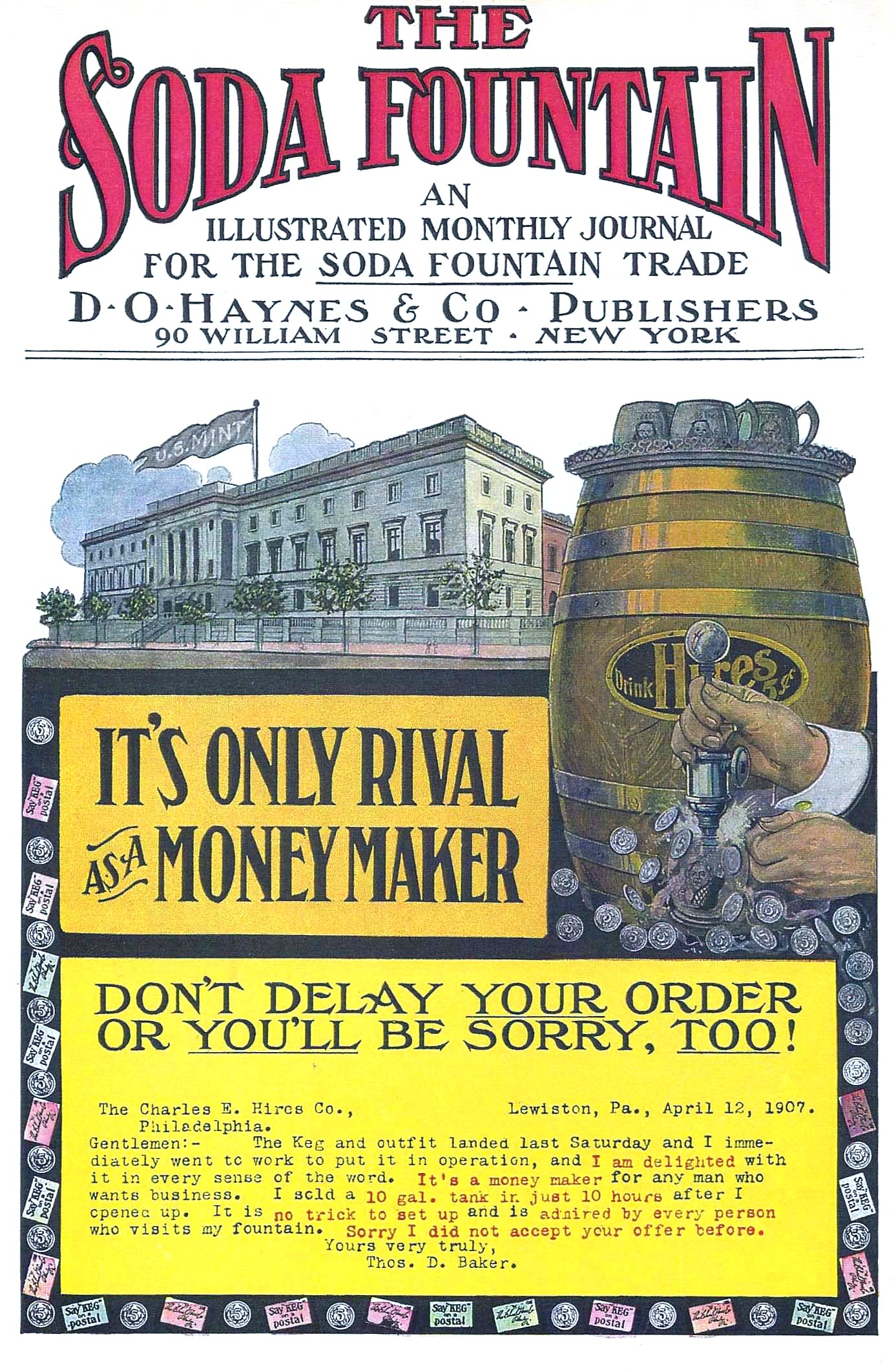
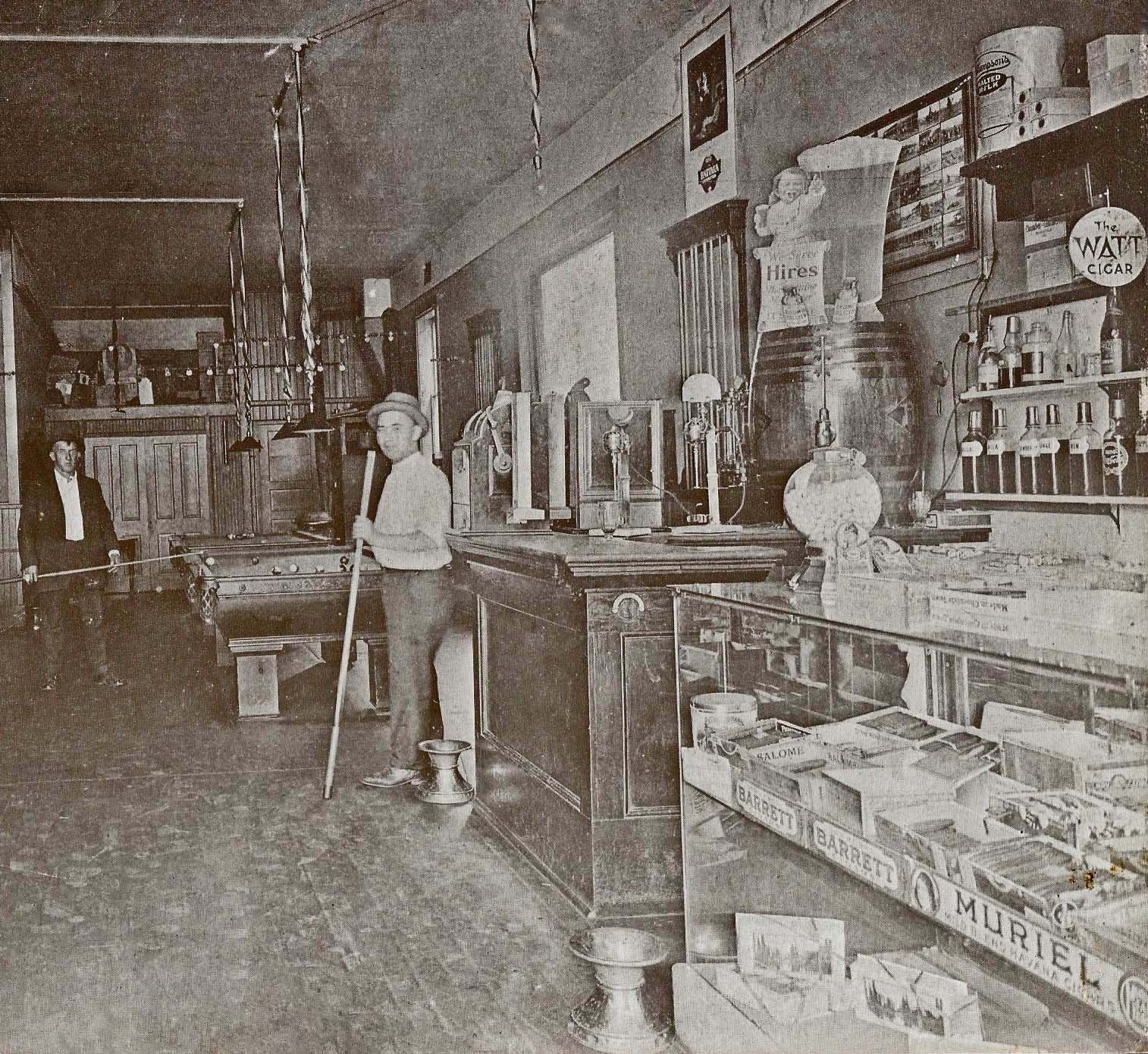
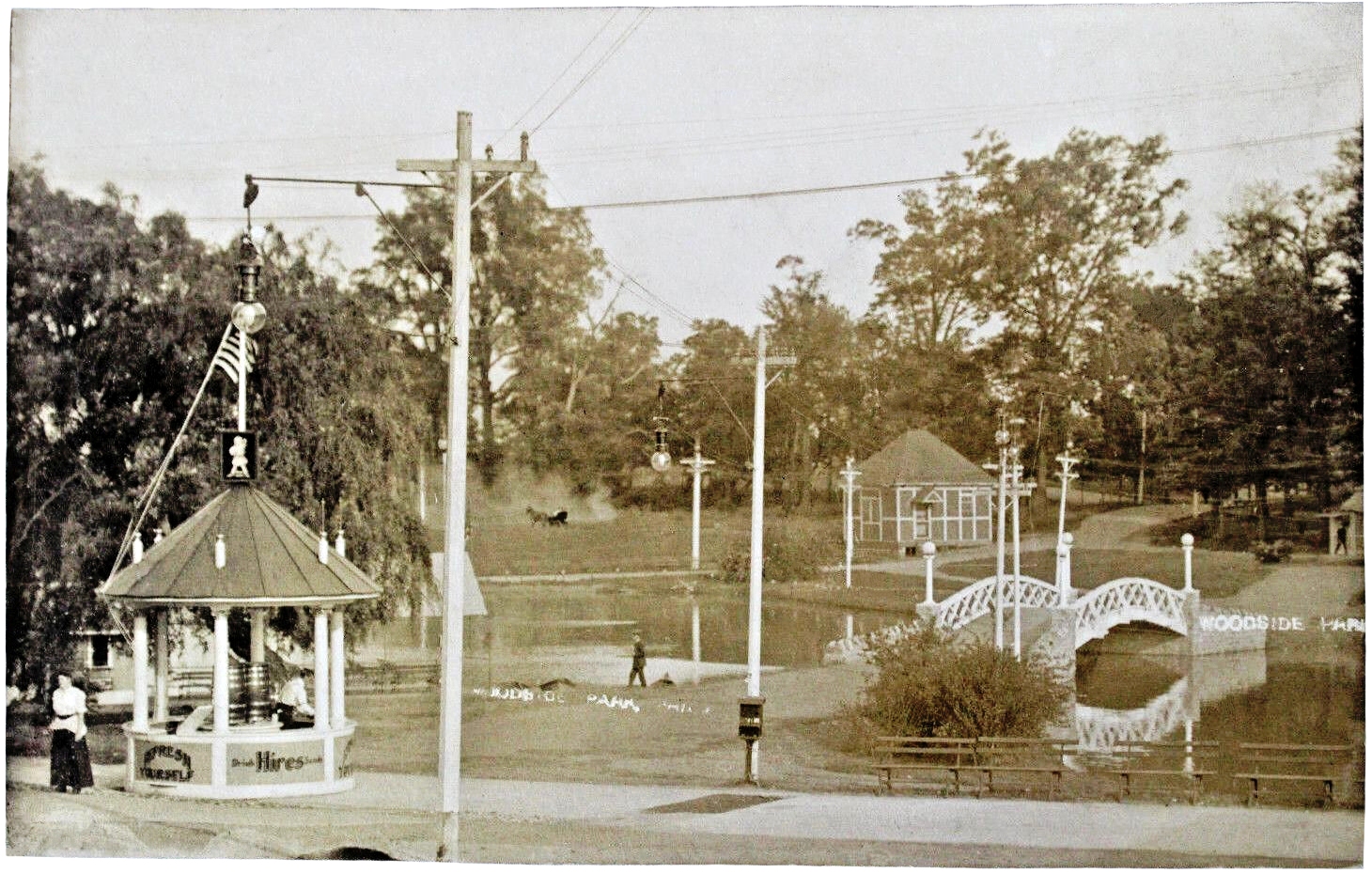
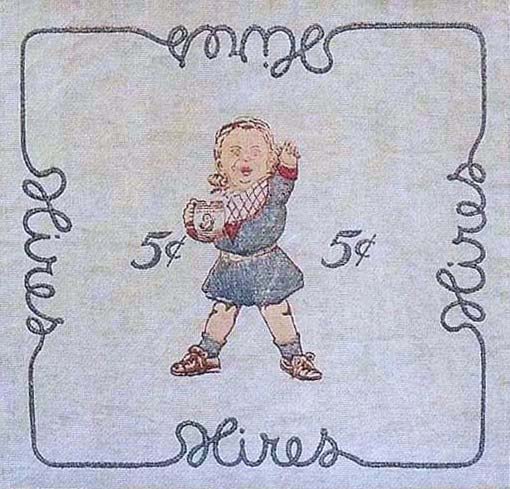

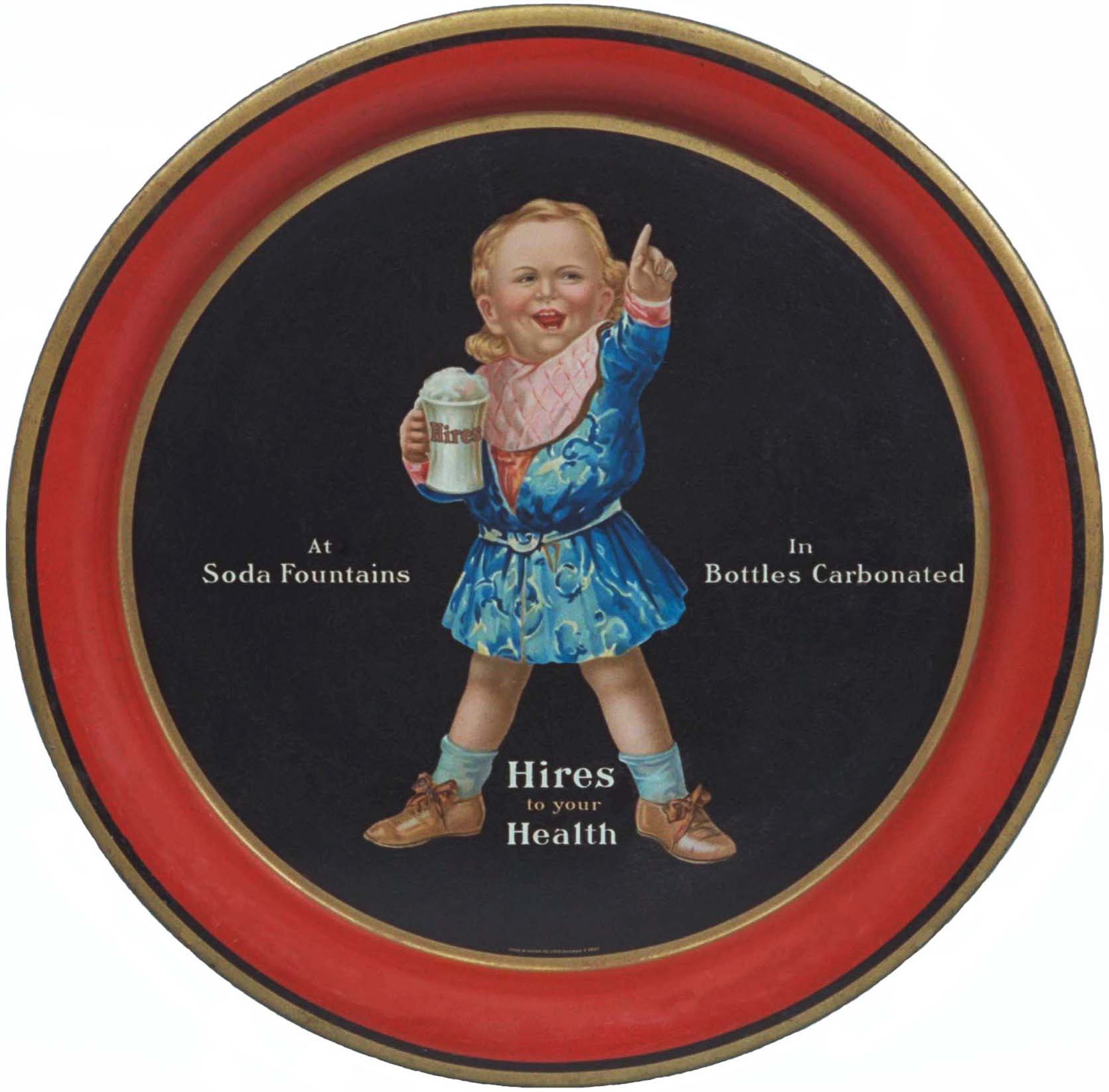
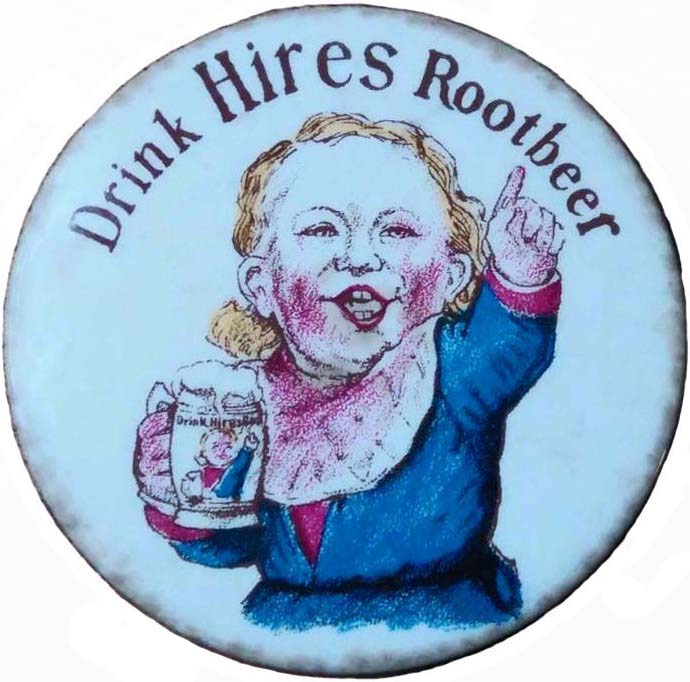
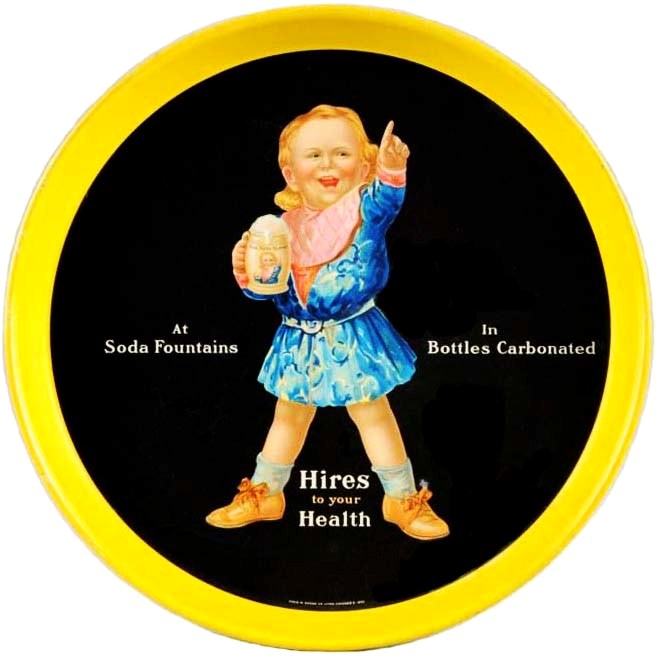
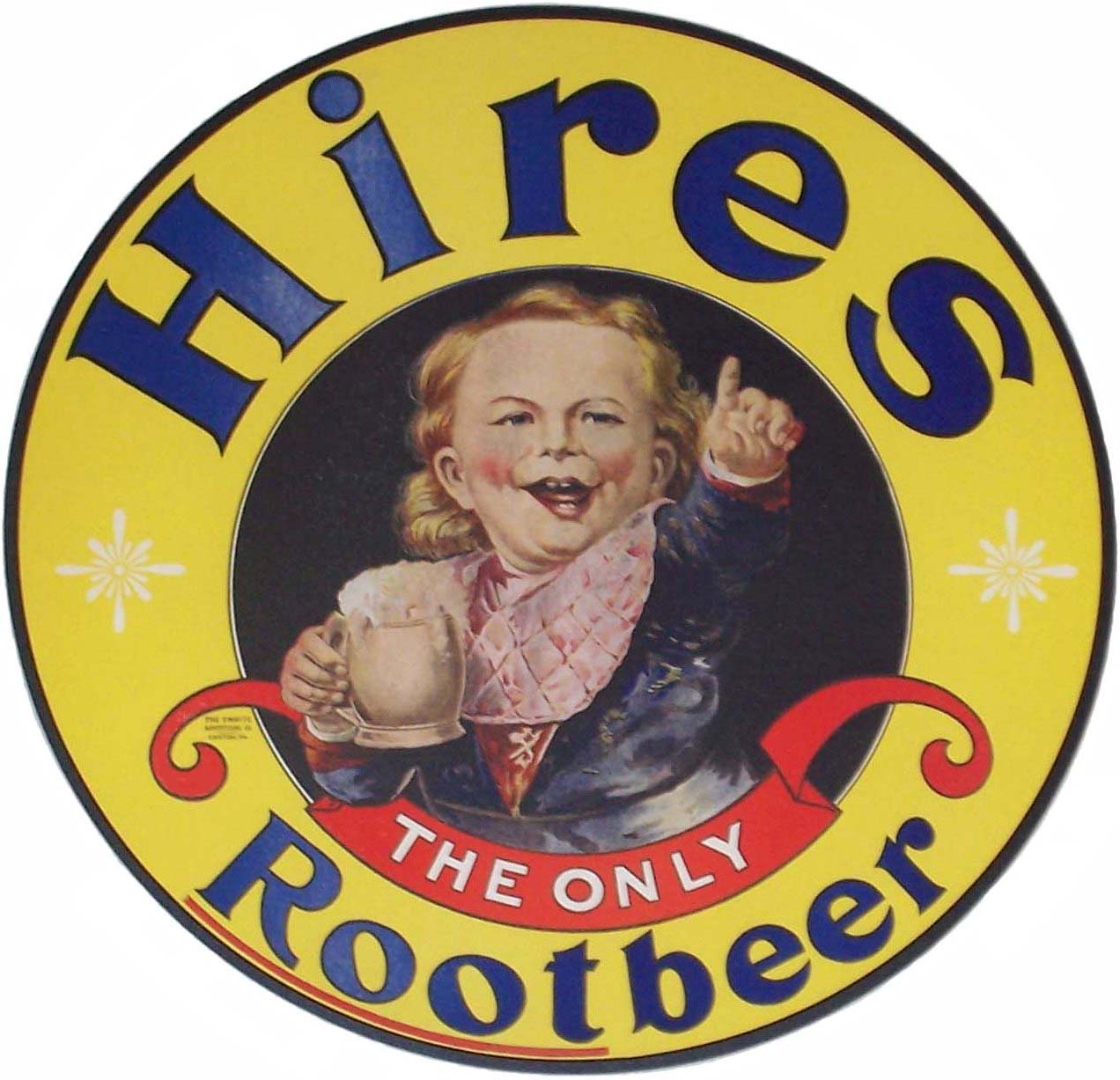
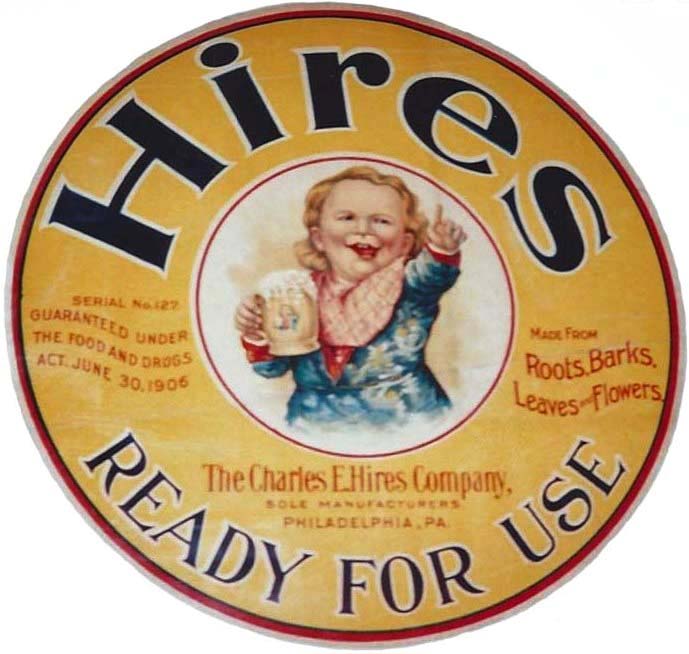
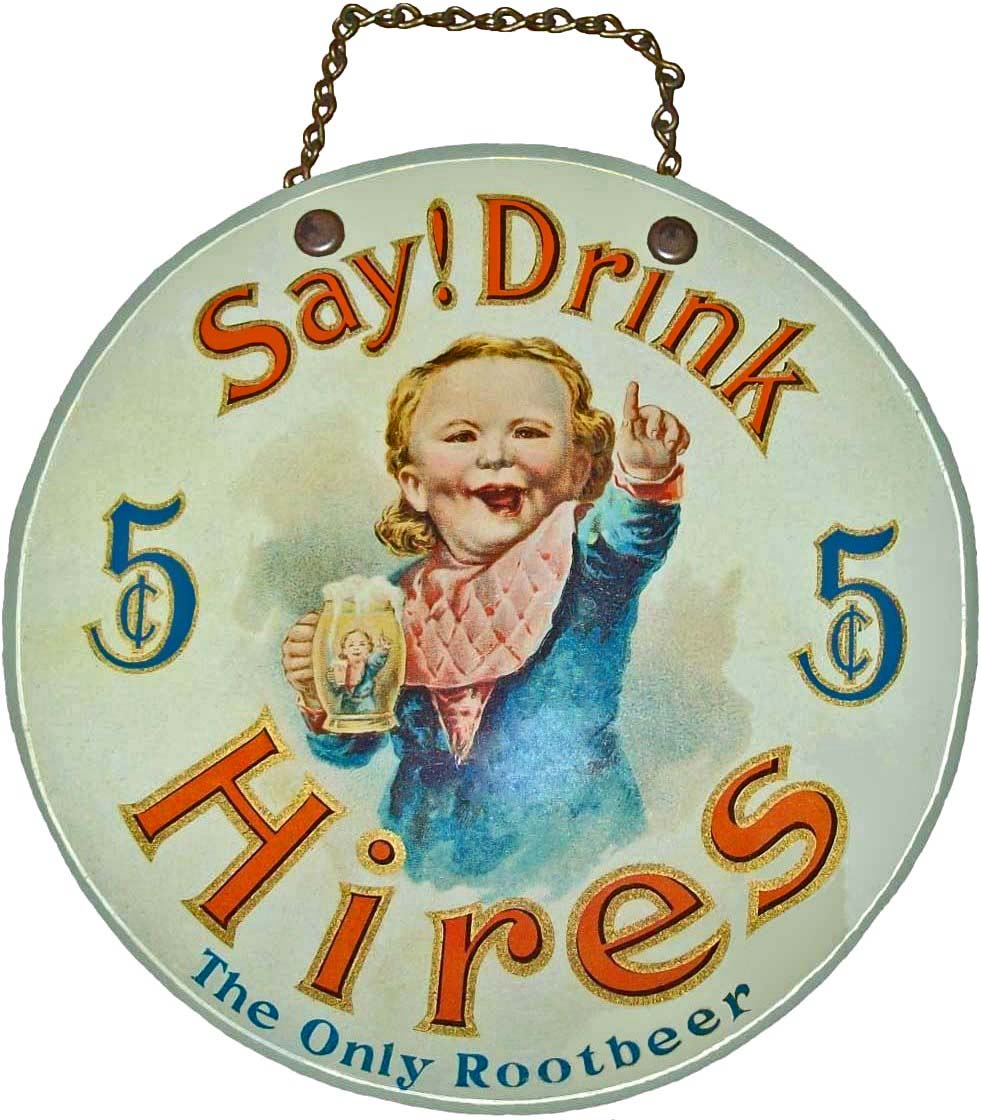
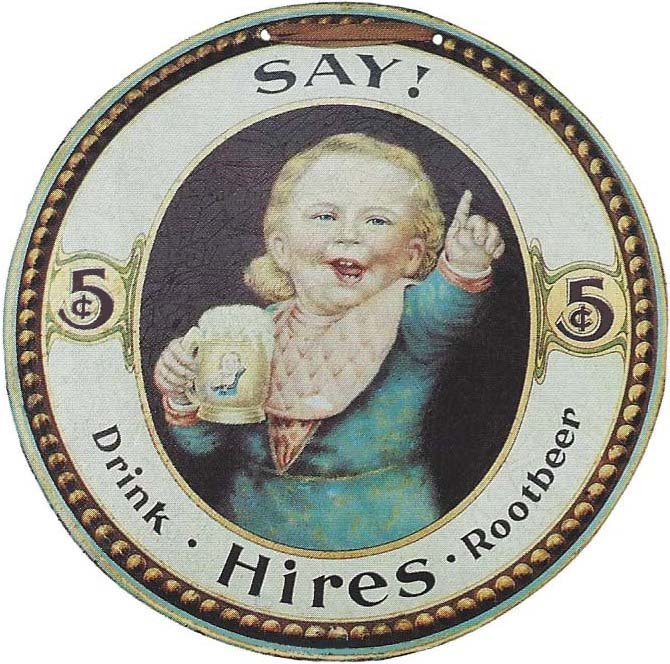
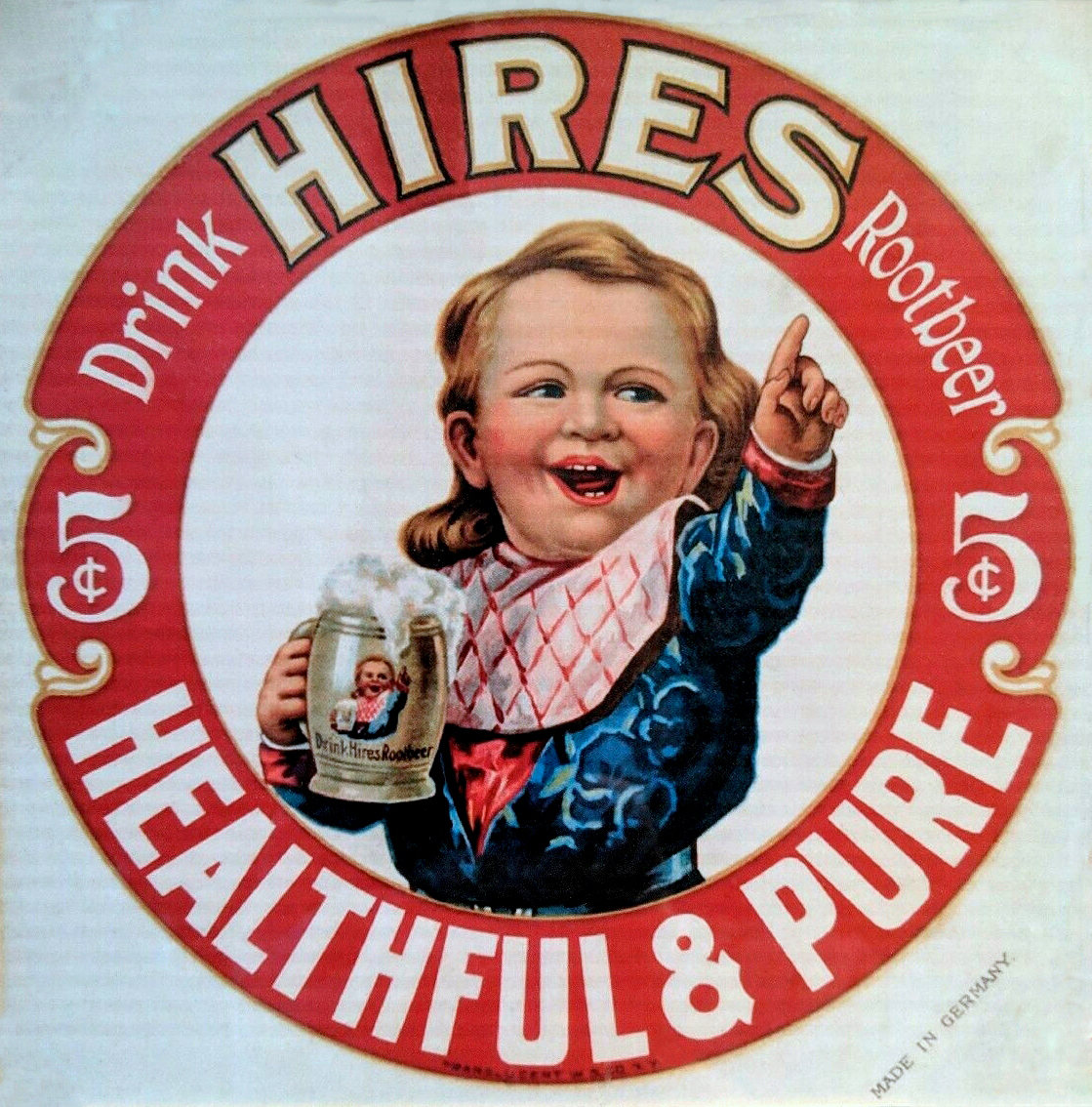
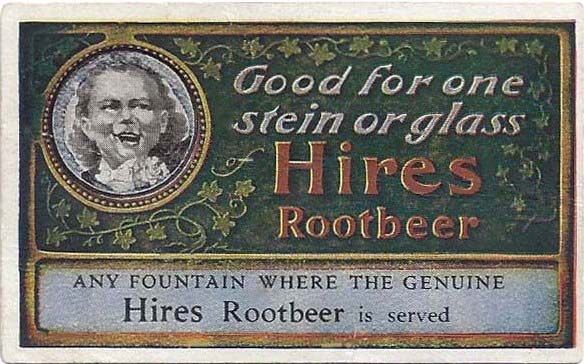
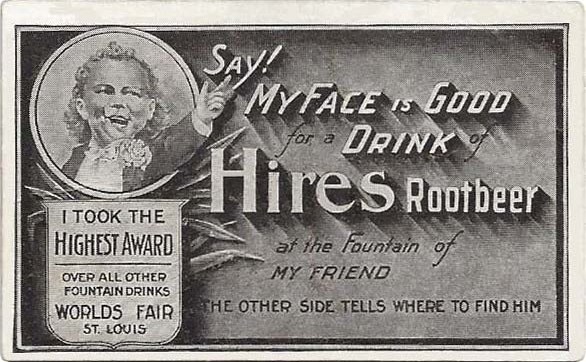
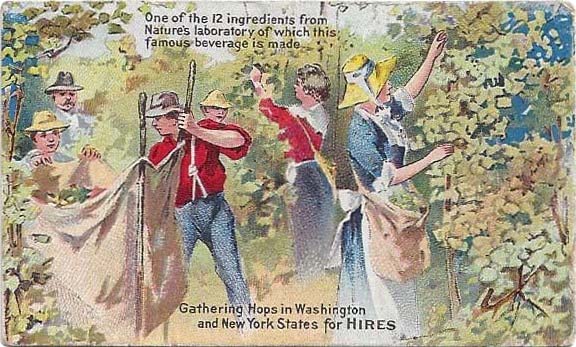

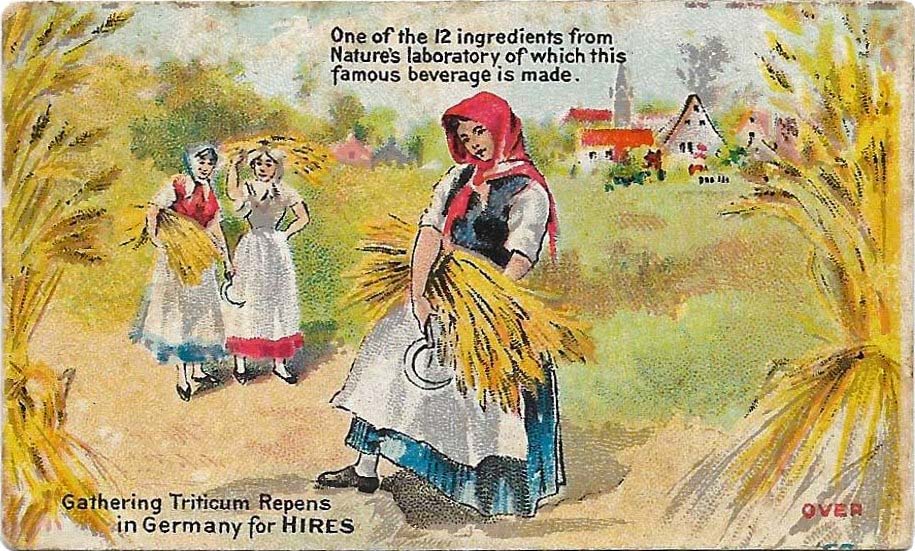
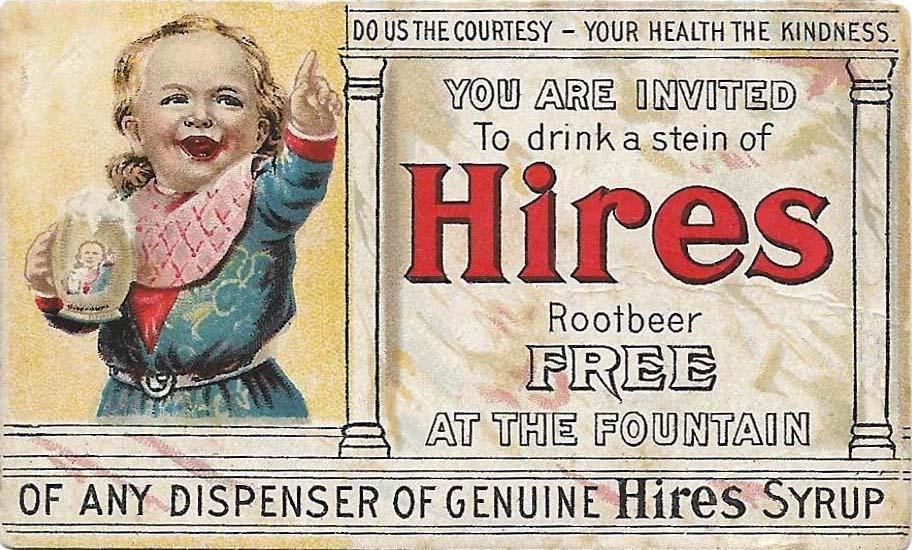
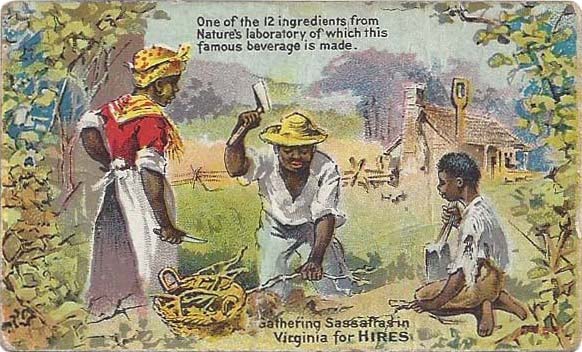
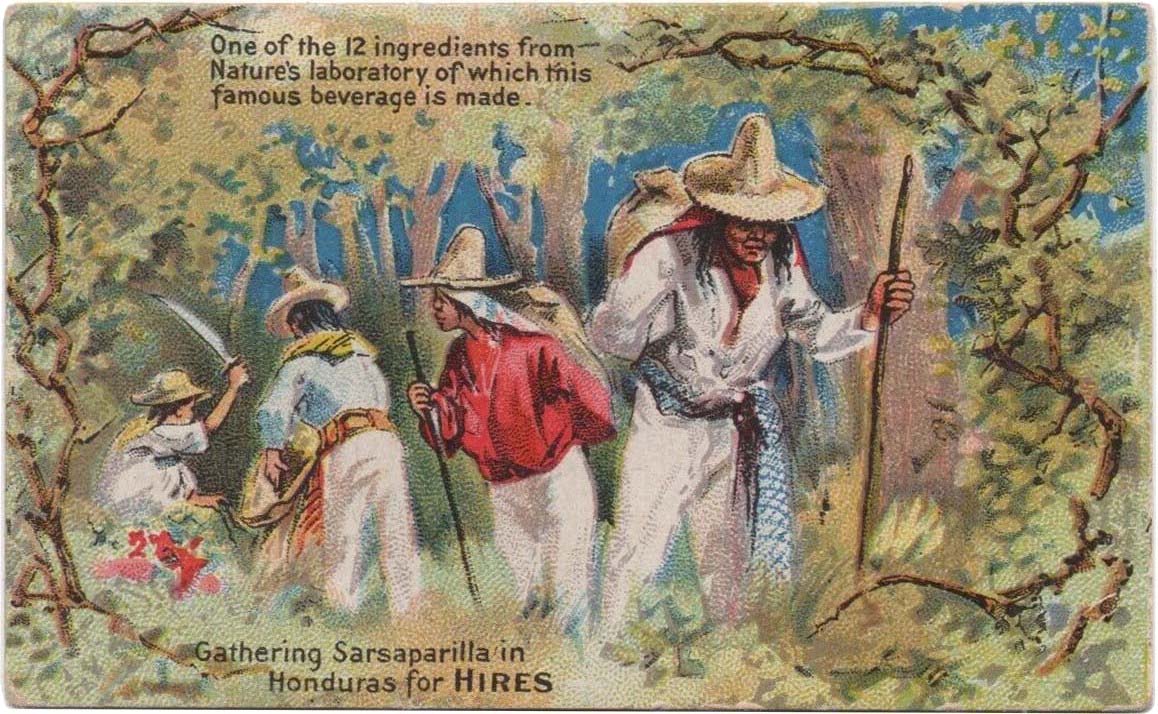
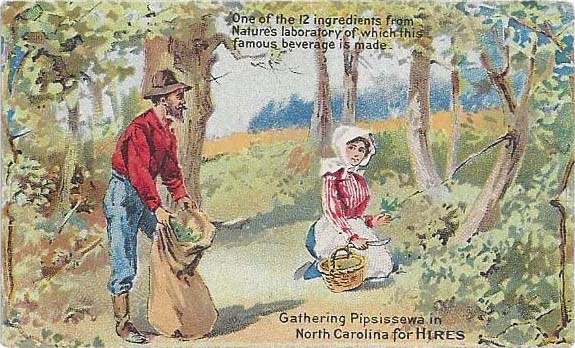

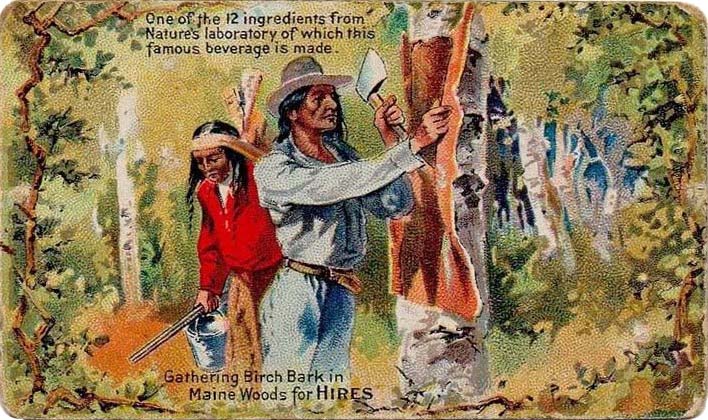
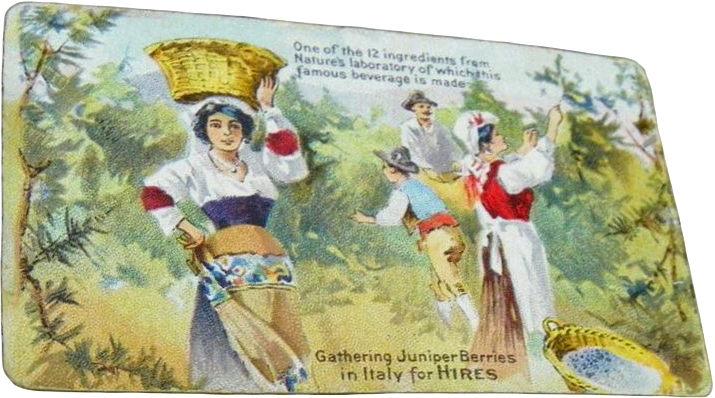
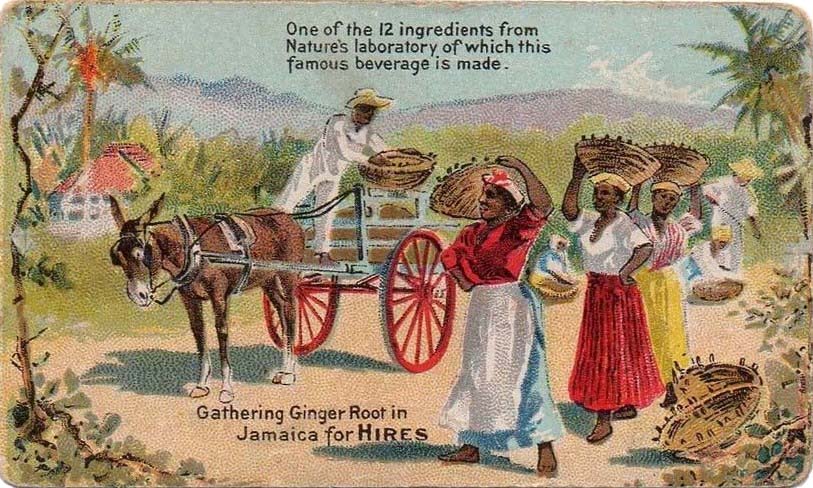
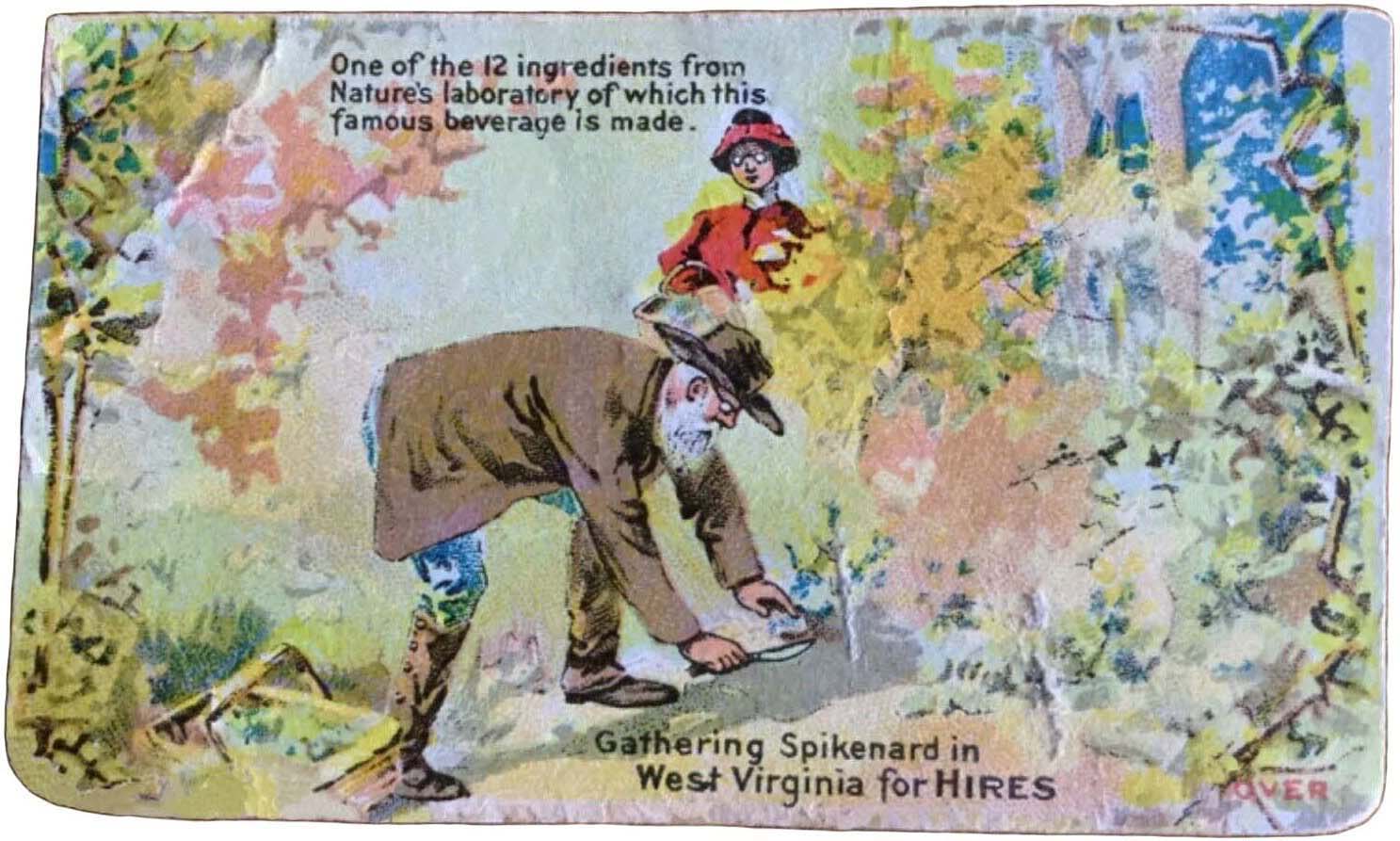

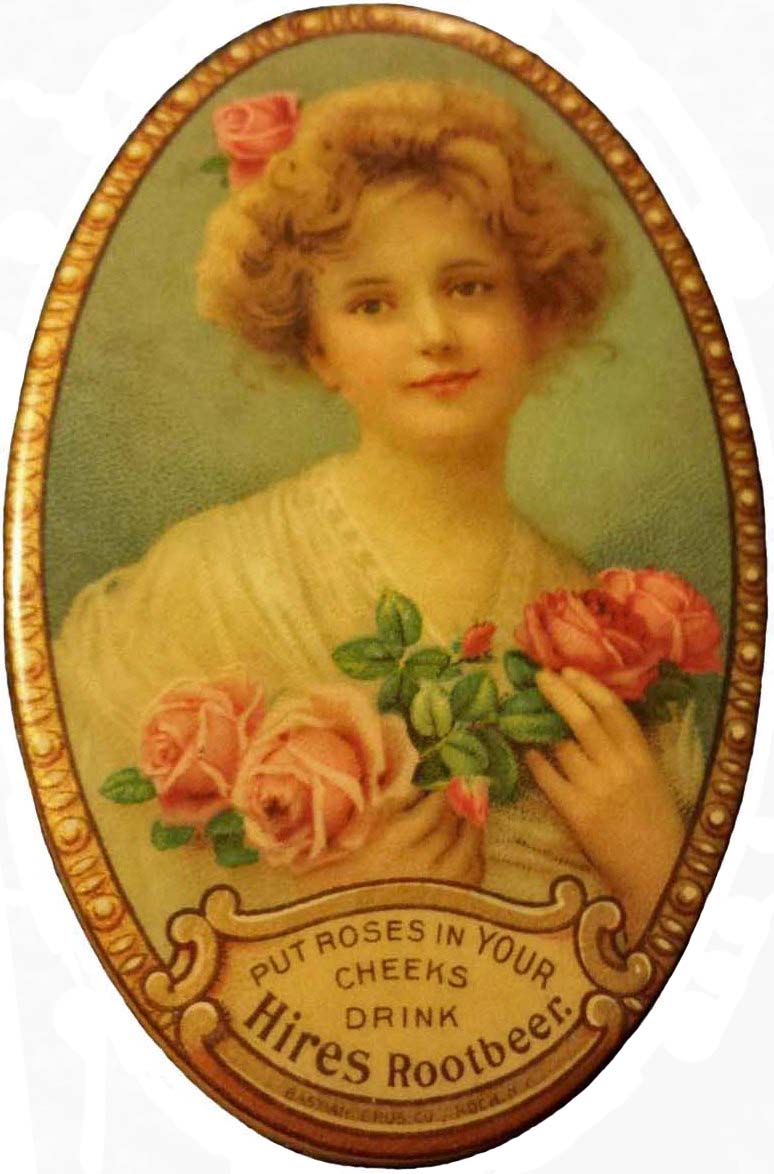



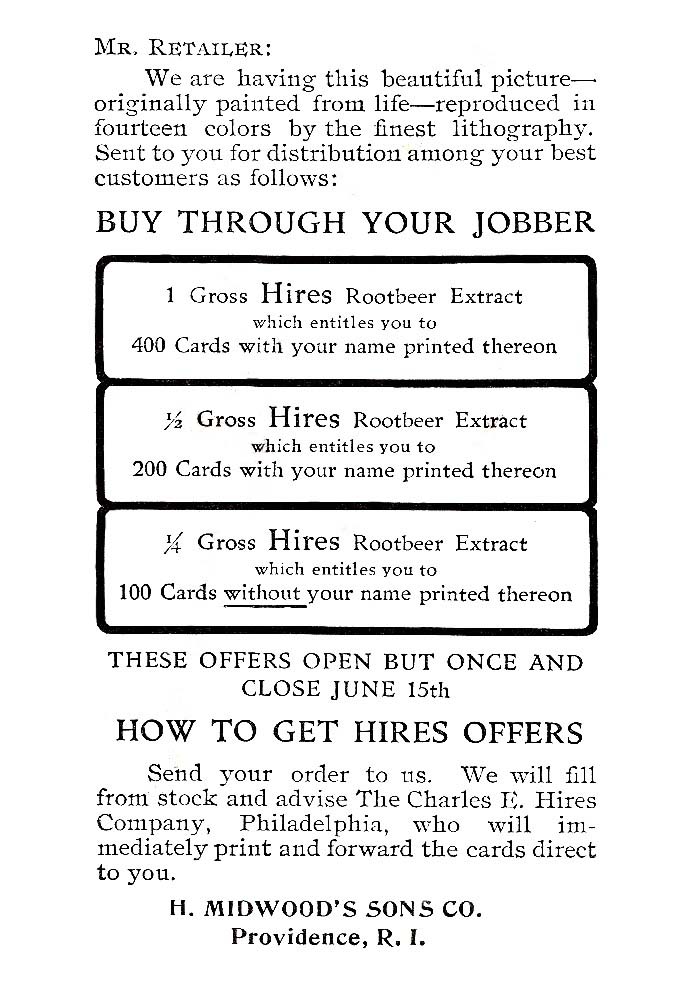
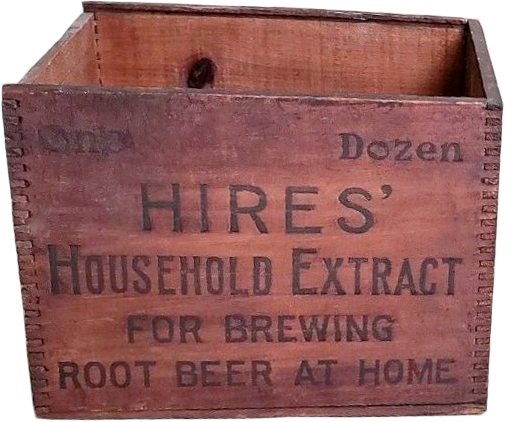

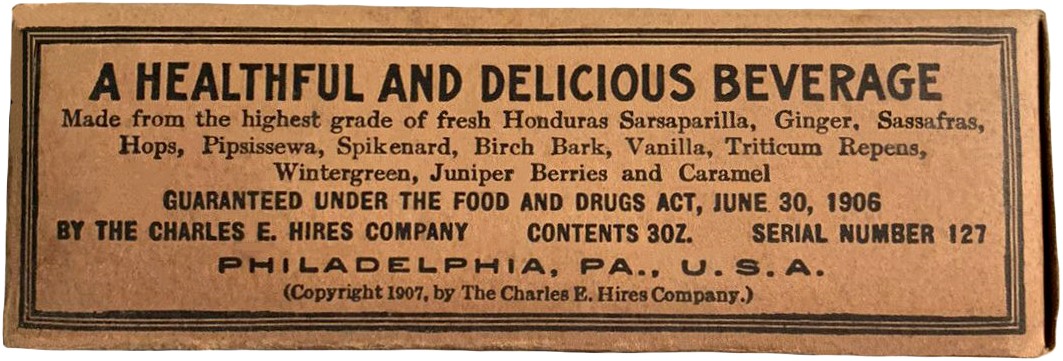
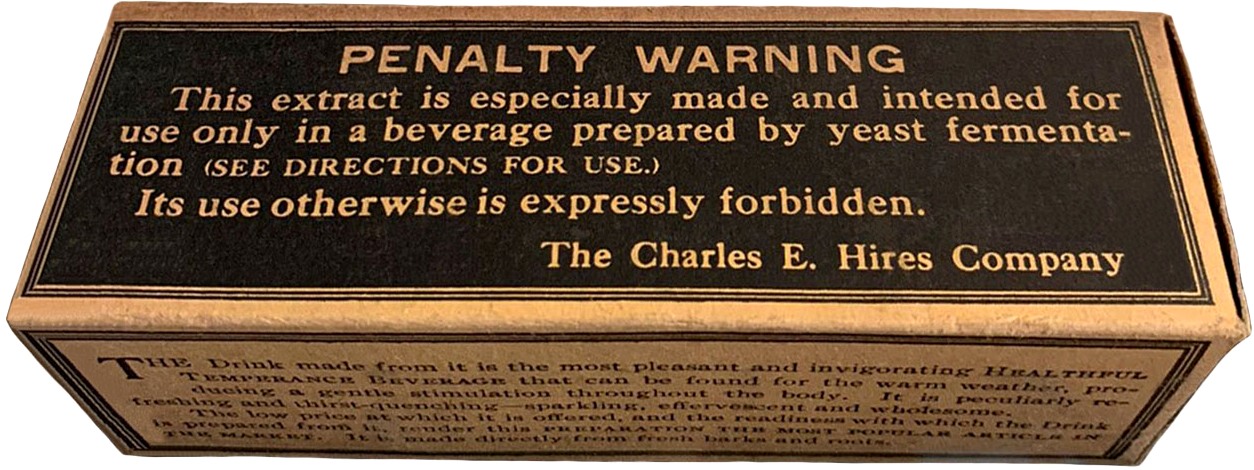
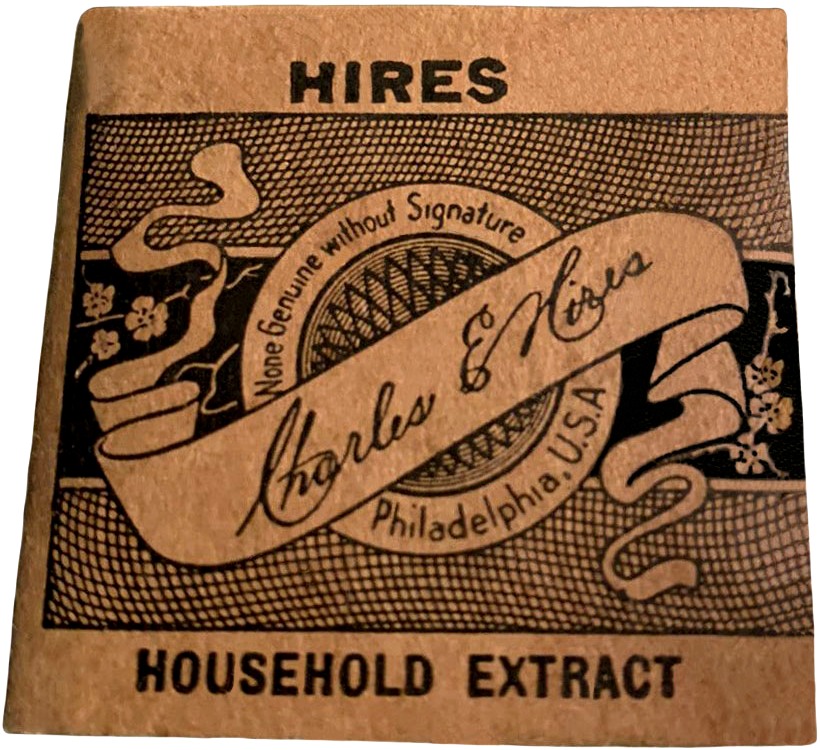
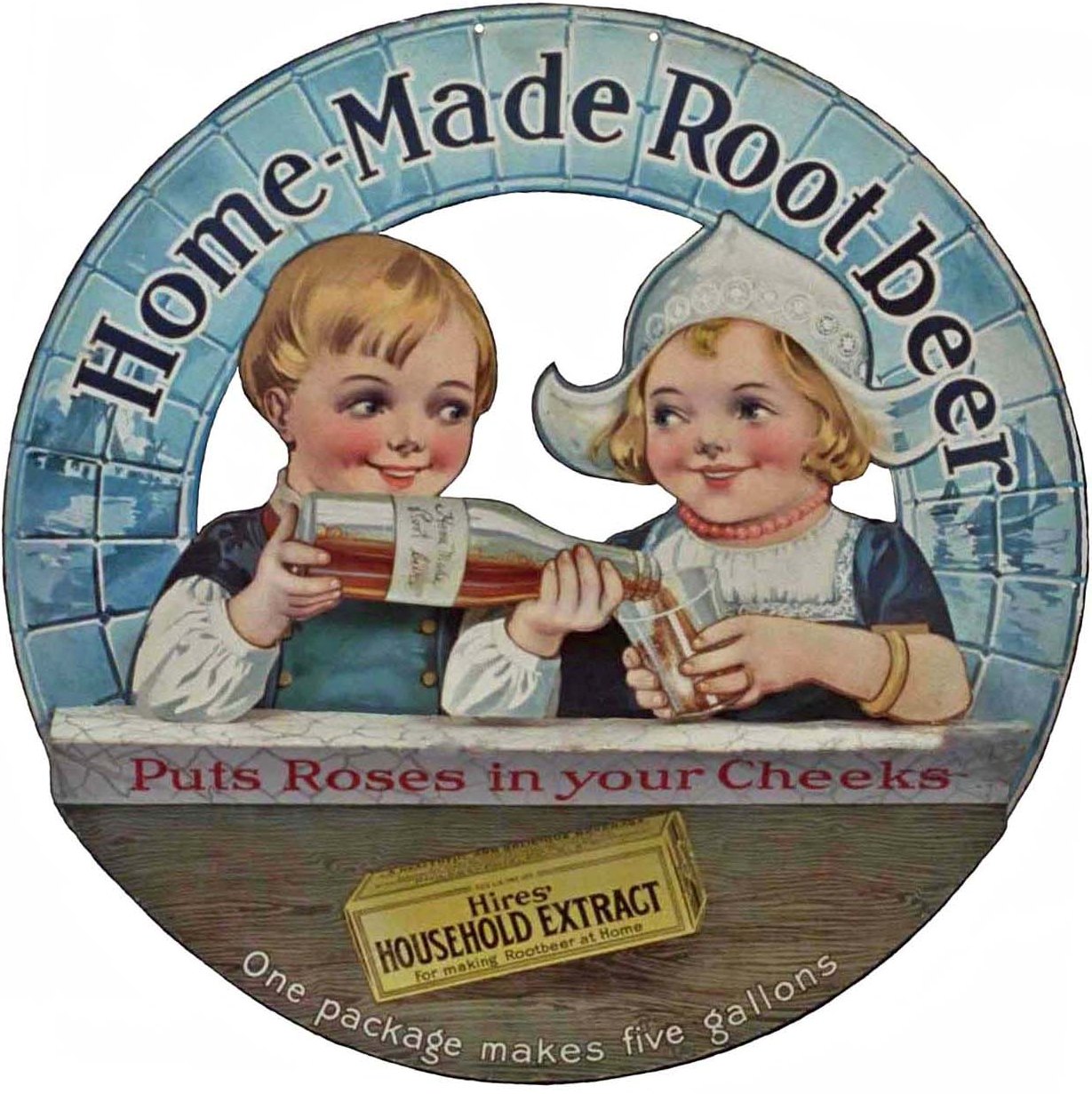
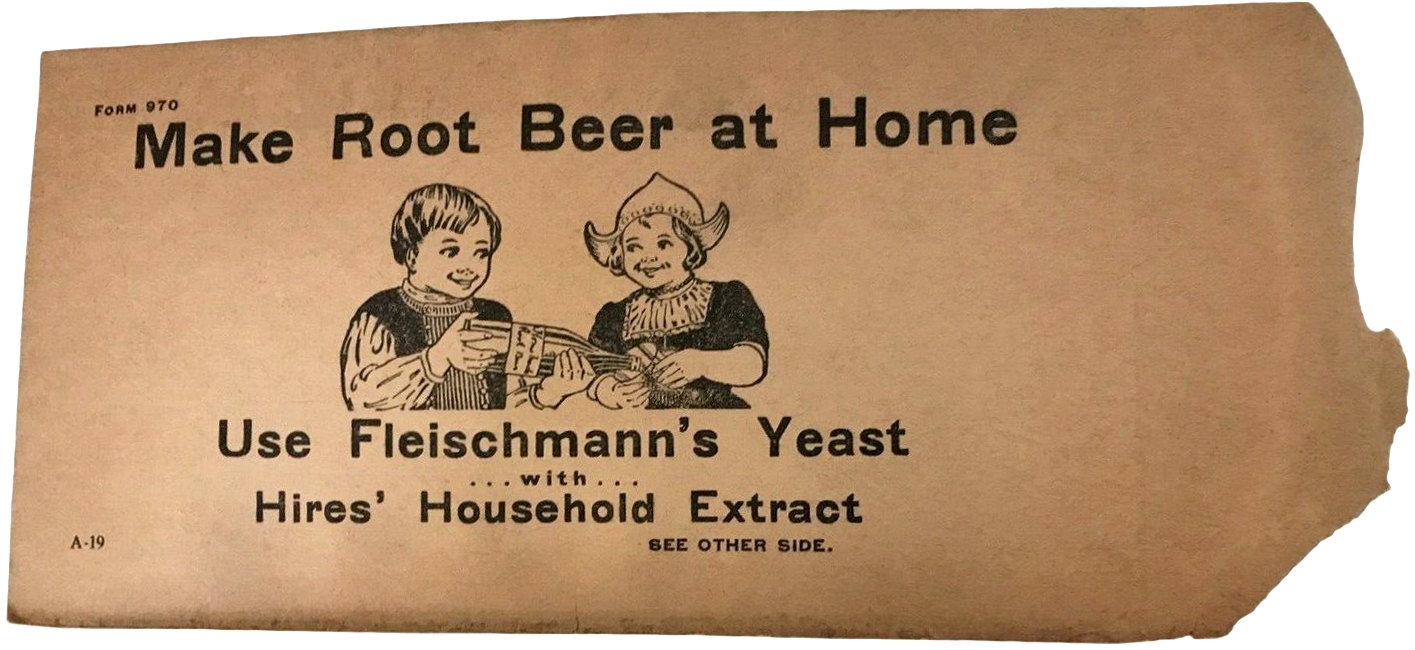
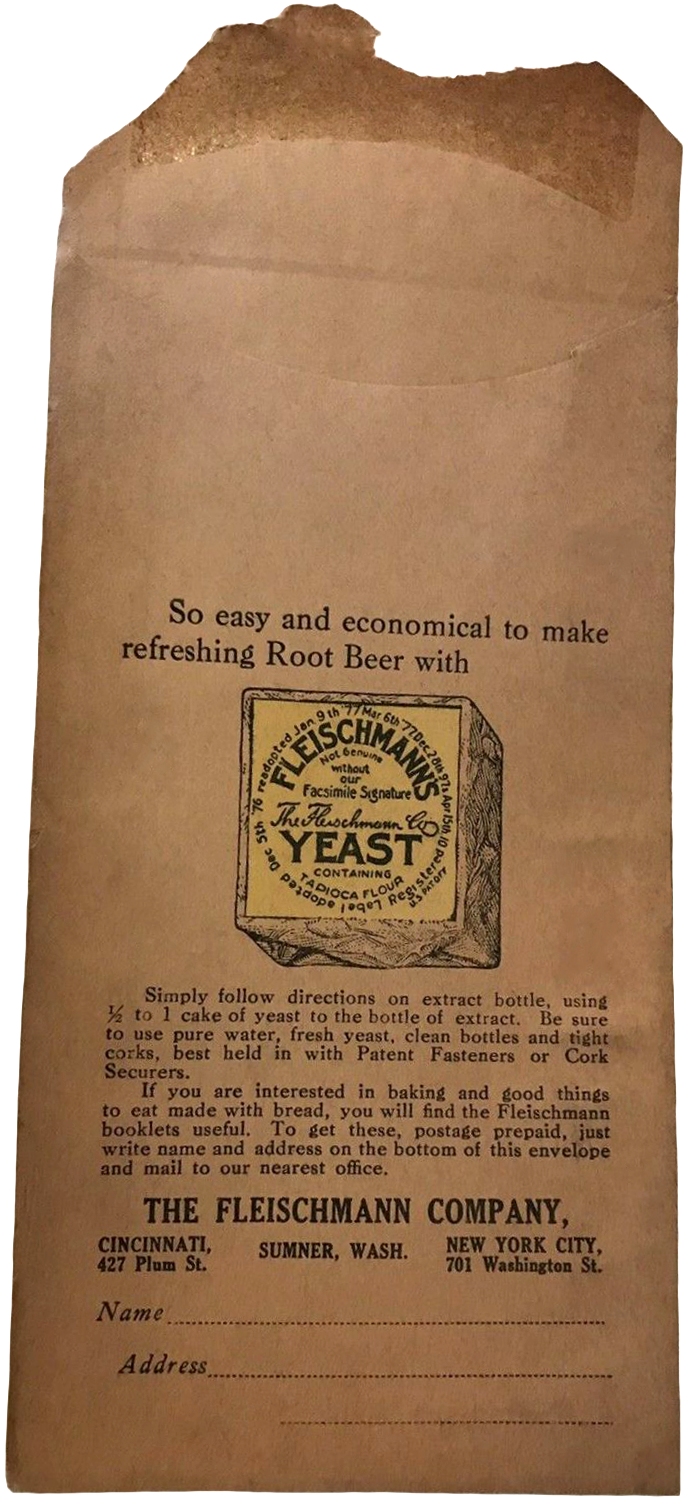
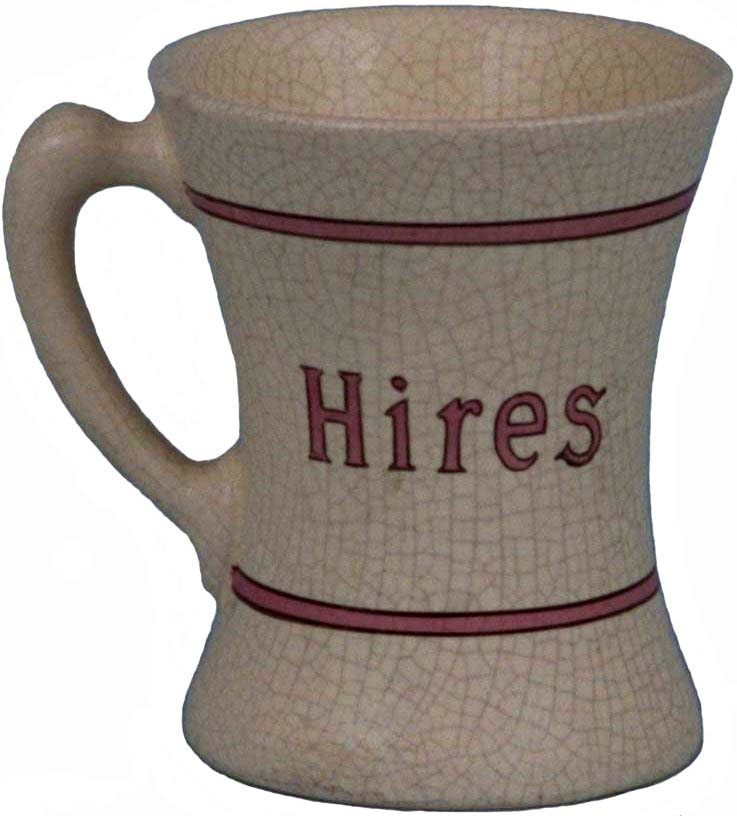
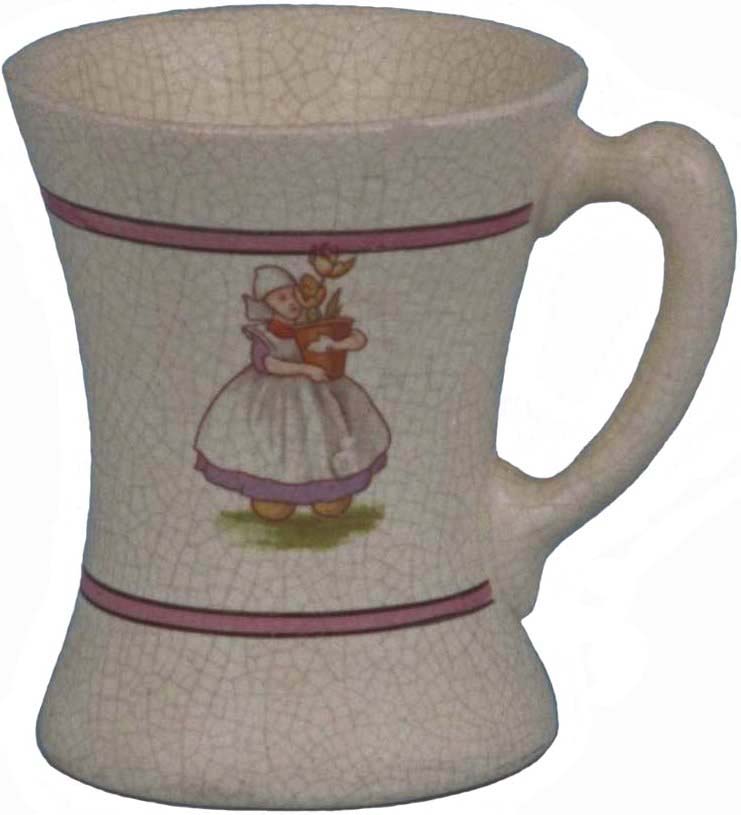
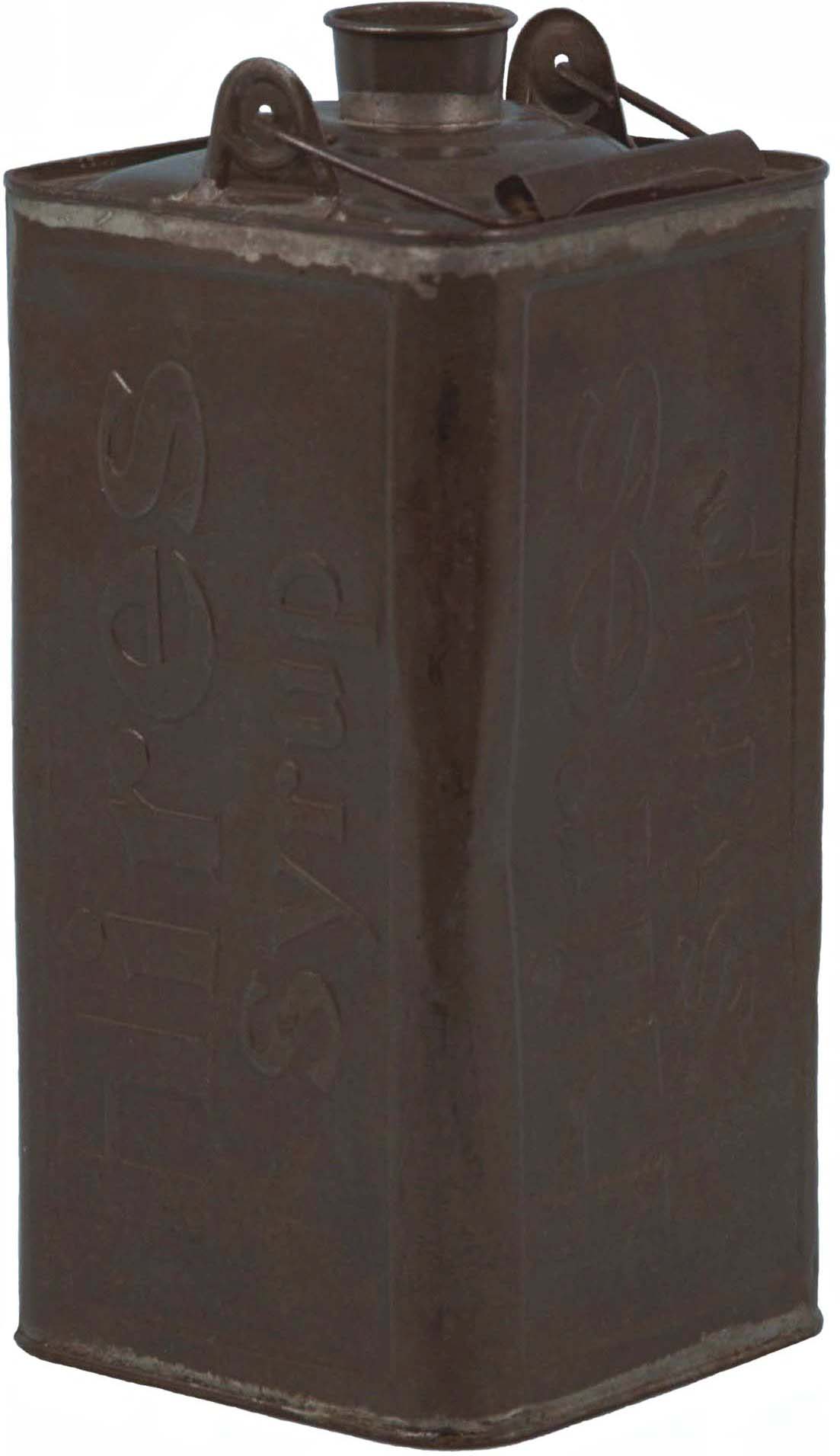
%20Fountain%20Syrup%20with%20corner%20spout.jpg)

